

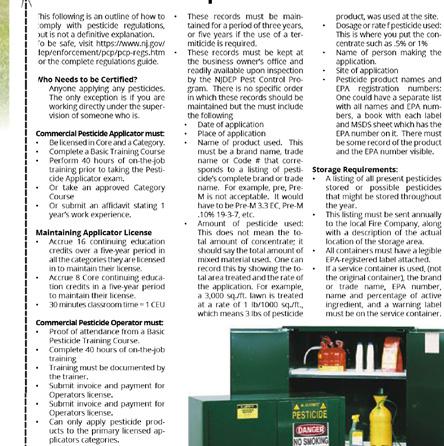


NJ STORMWATER RULE MEANS SALES FOR PAVER INSTALLERS THE EMPLOYEE TERMINATION PROCESS PESTICIDE COMPLIANCE CHEAT SHEET TEAR-OUT
Jersey Landscape Contractor Summer 2023
The New
Audited CHINCH BUG MANAGEMENT The Official Publication of the New Jersey Landscape Contractors Association
Top 4 Reasons You’re Being
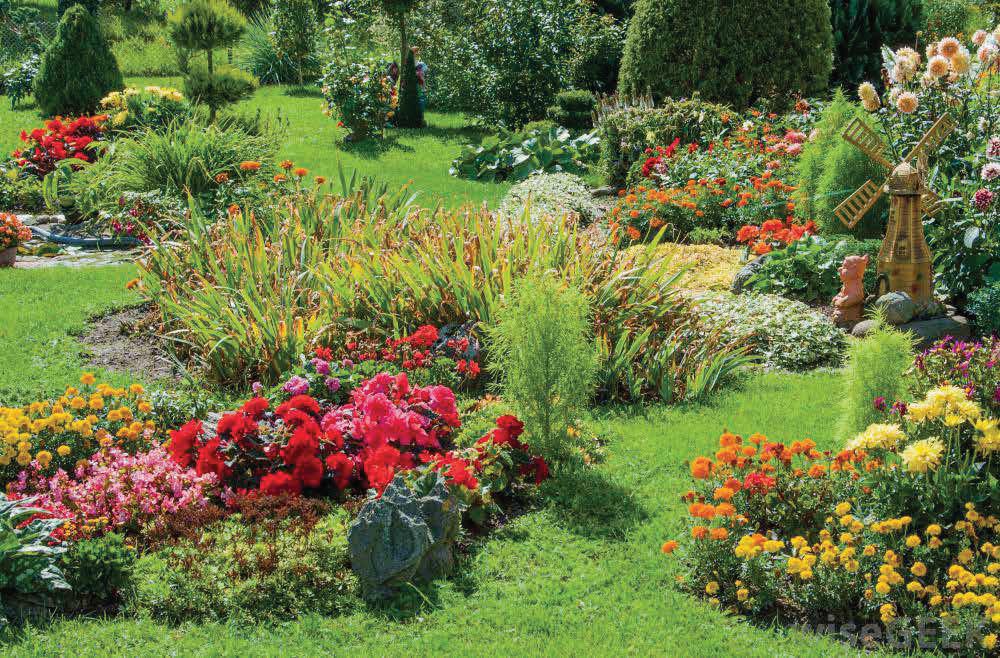


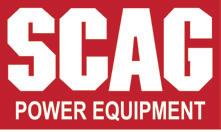


Table of Contents
President’s Message
The Buzz
Letter from the Editor
Coming Events
Maximizing Efficiency and Savings
Top 4 Reasons You’re Being Audited
Learn from Brightview’s Costly Mistakes
Time for a Business Insurance Review
Did You Know the Nursery Industry is Eligible for FSA Programs
Turf Talk
News from the Pacific Northwest and Soil Updates

Landscape Lighting....
Today’s Weather is Unpredictable
The Employee Termination Process
Above and Underground Partners
Protecting Your Legacy
Landscape AlterNATIVES: Eastern White Pine (Pinus Strobus)
You’re Either at the Table or on the Menu
NJ Stormwater Rule Means Sales for Paver Installers
What to Expect During a Pesticide Business Inspection
Tear Out: Pesticide Compliance Cheat Sheet
Landscape Companies: Are You Underinsured?
Chinch Bug Management
Welcome Members
Poolscaping Makes a Bigger Splash by Adding Adjacent Amenities
Understanding Turf Disease: Best Practices & Control
Contractor Focus: Birch Hill
Landscaping
Associate Focus: Lawn Doctor
NJ Contractors Showcase Expo
Tales from the Landscape Side
The New Jersey Landscape Contractor magazine is the official publication of the New Jersey Landscape Contractors Association, dedicated to the professional landscape industry of New Jersey. NJLCA was founded in 1966 as the Bergen County Landscape Contractors Association, and is today comprised of over 550 member companies throughout New Jersey.
New Jersey Landscape Contractors Association
465 Mola Blvd, Ste. 2, Elmwood Park, NJ 07407
Phone | 201-703-3600 -- Fax | 201-703-3776
E-mail | info@njlca.org
Visit our website at www.NJLCA.org
Publisher/Editor: Gail E. Woolcott
Contributing Writers
Dean Alberty | Bob Andrzejczak | Jesse Benelli | Joe Bolognese Jr. | Rob Bowen | Steven Bross | Greg Carpenter | Steven Cesare, PhD. | Doug Cherry | Michael D’Altrui | Charles Gamarekian | Rich Goldstein | GT Mid Atlantic | Phil Harwood | Bob Mann | Dan Moreland | Anthony Morreale | OPEI | Todd Pretz | Jeffrey Scott | Gail Woolcott | Steven Yergeau | Wei Zhang
NJLCA Combined Board
President | Richard Goldstein, CLT
Vice President | Richard Andreu
Treasurer | Adam Reisboard
Chairman of the Board | Bob Pedatella
Director | Jeff Baker
Director | Tom Barillo
Director | Kevin Dulio
Director | Justin Flatow
Director | George Futterknecht, CLT
Director | Shawn Kukol
Associate Director | David Gaynor
Associate Director | Rawn Leegwater
Associate Director | Wade Slover
Associate Director | AJ Tudda
Advisor | Dr. Steve Fischer, Bergen Comm. College
Advisor | Dr. James Murphy, Rutgers University
The New Jersey Landscape Contractor magazine is published triennially. 600 print copies are distributed to members and over 4,000 digital issues are sent to professionals in the Green Industry of New Jersey, as well as educational and governmental institutions. Subscription rates: $45.00 per year; $15.00 per copy. New Jersey residents only, please add 7% sales tax.
To advertise in The New Jersey Landscape Contractor, please contact Gail Woolcott at (201) 703-3600 or e-mail gwoolcott@njlca.org.

Article and photo submissions are encouraged and may be sent to NJLCA at the above address. Publisher assumes no responsibility for safekeeping or return of photos or manuscripts, and reserves all rights to edit material submitted for publication.
© 2021 New Jersey Landscape Contractors Association. All rights reserved. The contents of this publication may not be reproduced by any means, in whole or in part, without the prior written consent of the publisher. The opinions expressed in articles do not necessarily represent the opinions of the NJLCA.
PUBLISHED June 2023
Cover Photo: CLC Landscape Design“Mountaintop Luxury”
www.NJLCA.org
Published By
4 4 5 5 7 9 10 13 15 17 20 23 25 26 28 30 31 32 35 40 41 43 44 46 47 48 50 51 52 53 3
NJLCA/NJNLA/NALP Sustainable Landscape Event
At NJLCA Board Meetings we discuss so many topics. From new education opportunities to expansion, from individual member issues to how we can help protect the entire industry. At our most recent Board Meeting we ended up on the topic of how the landscape and nursery industries are perceived and how we can increase professionalism.
Professionalism is a vital trait that can significantly impact an individual’s or company’s success. First and foremost, professionalism enhances your credibility and reputation. When you consistently demonstrate professional-
The buzz
Mariani Landscape, which ranked No. 21 on Lawn & Landscape’s Top 100 list, has acquired Borst Landscape and Design, a full-service landscape design company in New Jersey.
Mariani Landscape has also acquired New Jersey-based Siciliano Landscape Company. This is the latest in a series of acquisitions by Mariani Landscape, continuing the company’s record growth and major national expansion.
President’s Message

ism in your work and interactions, it signals to others that you are reliable, competent, and trustworthy. People are more likely to seek your expertise, entrust you with responsibilities, and recommend you for opportunities when they perceive you as a professional.
Professional reflects your commitment to excellence and continuous growth. Professionals strive for high standards of performance, taking pride in their work and seeking ways to improve. They exhibit a strong work ethic, meet deadlines, and demonstrate reliability. By embracing professionalism, you cultivate a reputation for delivering quality results and therefore receive more referrals.
Professionalism extends beyond individual interactions; it contributes to a positive work culture. When everyone in a workplace embraces professionalism, it creates an environment of respect, collaboration, and productiv-
ity. Professional behavior sets the tone for teamwork, motivates others, and promotes a sense of shared purpose. It helps establish clear expectations and standards for conduct.
Professionalism requires accountability for your actions, taking ownership of mistakes, and striving to make amends when necessary. By embodying professionalism, you build a strong brand that reflects your character and values.
In conclusion, professionalism is an essential quality that impacts various aspects of our lives. By embracing professionalism, we can all elevate our businesses and the industry as a whole.
Sincerely,
Richard Goldstein, President
On June 14th, a contingent from the NJLCA joined the NALP and FEWA in Washington, DC for the annual H-2B flyin. The New Jersey contingent included Todd Bradbury, Bradbury Landscape, Dan Skarbnik, Lakeland Lawn & Landscape, Joe Palimeno, Ledden Palimeno, Kurt Alstede, Alstede Farms, Dana Ronyack-Davis, Stony Hill Gardens, Rob Virone, Environmental Designers and his family, Stefania and Anthony
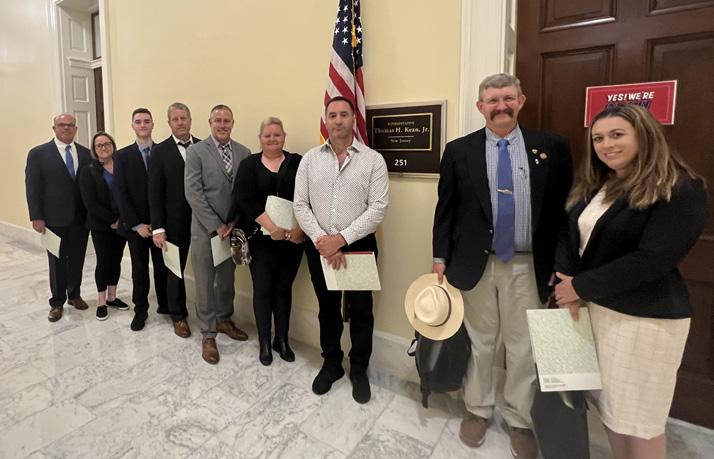
Virone, along with NJLCA Executive Director, Gail Woolcott attended meetings throughout the day with New Jersey Legislative Offices to discuss a returning worker exception. This would exclude workers that have come to the US over the past several weeks from the 66,000 cap each year. Congressman Bergman (R-MI) and Congressman Keating (D-MA) had drafted a letter addressed to the leadership on the appropriations committee. We asked our representatives to strongly consider adding their signatures to the letter as a show of support for the inclusion of the H-2B returning worker exemption in the Fiscal 2024 Department of
Homeland Security Appropriations bill. The group met with representatives from the offices of Congressman
Joshua Gottheimer, Congressman
Thomas H. Kean, Jr., Congressman
Donald W. Norcross, Congressman
Bill Pascrell, Congresswoman Mikie Sherrill, Congressman Rob Menendez, Jr., Congressman Frank Pallone, Congressman Christopher H. Smith, Congressman Jefferson Van Drew. The group also met with Senator Cory Booker’s office to ask for his support when legislation for H-2B reaches the Senate. Of the appointments, Congresswoman Sherrill, Congressman Gottheimer, Congressman Kean and Congressman Smith signed on to the letter in support. Thank you to all who attended and to our legislators for meeting with us!
New Jersey Secretary of Agriculture
Douglas H. Fisher announced his plans to retire from the position as of July 1,

4
Summer 2023
Letter from the Editor
Welcome to the latest issue of The New Jersey Landscape Contractor magazine! Once again, we’ve packed this issue with all of the important info you need to save money, protect your business, become more innovative and more.
As the Editor of this esteemed magazine, it is my pleasure to address you and share some thoughts on the power of knowledge, the impact of storytelling, and the importance of staying informed in the landscape industry.
In an era dominated by technology and the relentless flow of information, it has become increasingly crucial to discern the truth from the noise. At our magazine, we strive to be your trusted source of reliable and insightful content, guiding you through the vast landscape of news, trends, and ideas. And honestly, putting together this magazine is one of my favorite job tasks.
We work tirelessly to bring you educational articles and captivating stories that touch on various facets of our industry. We encourage you to actively engage with the content we provide to keep your business ahead of the curve and your employees at the top of their game. Your feedback, suggestions, and contributions are invaluable in shaping the future direction of our magazine.
And of course, we want to hear your stories! If you have something of interest, insightful, educational or even humourous to share, please send it to me at gwoolcott@njlca.org.
One of the greatest benefits of being a member of the NJLCA is the relationships, networking and knowledge you gain from each other. So even if you don’t think you’re a “writer”, share your thoughts with us and let us turn them into something that can help, cheer on
and educate your fellow industry colleagues.
Thank you for your continued support, trust, and readership. We are honored to be a part of your intellectual and business journey.
Have a wonderful summer and I can’t wait to see all of you at the NJ Contractors Showcase and Expo on August 2nd. By the way, we’ll have some great food trucks including “Eat My Balls” and “Jersey Johnny’s” so don’t miss it!
Sincerely,
 Gail Woolcott, Executive Director Editor of The New Jersey Landscape Contractor
Gail Woolcott, Executive Director Editor of The New Jersey Landscape Contractor

Coming Events
August 2nd - NJ Contractor’s Showcase Expo
after 14 years in the position. Secretary Fisher was originally approved by Governor Jon Corzine in February 2009, and he served under both Governor Chris Christie and current Governor Phil Murphy. We thank Secretary Fisher for being a great friend and so supportive of the NJLCA!
Sad News to report...Rick Hewson of Hewson Landscape and husband of Owner Shelly Hewson passed away on April 27, 2023. Our hearts and thoughts are with the Hewson family and staff.
Congratulations to Gregg Straffin and Danielle Bucci of York Motors, who are expecting their first baby in September 2023!
Welcome Rutgers University Department of Plant Biology and Center for Turfgrass Science’s Dr. Ming-Yi Chou to the faculty as an Assistant Extension Specialist, specializing in turfgrass pathology.
Congratulations as well to Dr. Matt Elmore, weed scientist at Rutgers Department of Plant Biology and Center for Turfgrass Science on his promotion to Associate Extension Specialist and granting of tenure!
Don’t forget to scan below to register for FREE for the NJ Contractors Showcase and Expo at County College of Morris on August 2nd!

8/2 - NJ Contractors Showcase & Expo
September 7th - Member Meeting at Hionis Greenhouses
October 11th - NJLCA Annual Golf Challenge
October 15th - Landscape Achievement Awards & Special Awards Application Deadline
October 19th - Member Meeting at Bobcat of North Jersey
December 5th - Holiday Gala and Landscape Achievement Awards
Make sure you are preparing and taking photos of your projects to enter in the NJLCA Landscape Achievement Awards
www.NJLCA.org
5

NEW PLATINUM COLOR AVAILABLE NOW IN THE FOLLOWING PAVINGSTONES: Ledgestone 3-Pc. Design Kit • Ledgestone Smooth 3-Pc. Design Kit Ledgestone XL 3-Pc. Design Kit • XL Smooth 3-Pc. Design Kit XL Smooth 24 X 36 • Crusader 12 x 24 Cap New! 2023 COLOR PLATINUM www.CambridgePavers.com | | Made in AMERICA
MAXIMIZING EFFICIENCY AND SAVINGS: CONSTRUCTION EQUIPMENT RENTAL TIPS AND BENEFITS
In the construction industry, having access to the right equipment is crucial for successful project completion. However, purchasing and maintaining a wide range of construction equipment can be a significant financial burden for many businesses. That’s where equipment rental services come in as a cost-effective and flexible solution. This article will explore essential tips for renting construction equipment and highlight the numerous benefits it offers.
1) Assess Your Project Needs:
Before renting any construction equipment, it is essential to evaluate your project requirements thoroughly. Consider factors such as the type and scope of the project, the duration, and the specific equipment needed. By identifying your needs, you can ensure you rent the most suitable machinery and avoid unnecessary expenses.
2) Partner with a Reliable Rental Company:
Choosing a reputable and reliable equipment rental company is crucial to the success of your project. Look for a provider that offers a wide selection of well-maintained machinery, prompt customer service, and competitive rental rates. Read customer reviews and ask for recommendations to ensure you partner with a company that values quality and customer satisfaction.
3) Plan Ahead and Reserve Equipment:
To avoid delays in your construction schedule, it is recommended to plan ahead and reserve the equipment you
need in advance. Rental companies and equipment dealers often have high demand for specific machinery, especially during peak construction seasons. By making reservations early, you can secure the equipment you require and have peace of mind that it will be available when you need it!
4) Optimize Equipment Utilization:
Renting construction equipment enables you to choose the right tool for each job without the burden of ownership. This flexibility allows you to optimize equipment utilization by selecting machinery specifically designed for the task at hand. You can rent different types and sizes of equipment as project requirements change, ensuring maximum efficiency and productivity.
5) Access to the Latest Technology:
The construction industry is constantly evolving, with new and improved equipment entering the market regularly. Renting construction equipment gives you the advantage of accessing the latest technology without the need for significant up-front investments. By using modern equipment, you can enhance project efficiency, safety, and quality, leading to better results and customer satisfaction.
6) Reduced Maintenance and Repair Costs:
One of the most significant advantages of equipment rental is that you are not responsible for maintenance and repair costs. Rental companies typically handle routine maintenance and repairs to
by GT Mid Atlantic
ensure their machinery is in optimal working condition. This saves you valuable time, money, and resources that would otherwise be spent on servicing and upkeep.
7) Cost Savings and Financial Flexibility:


Renting construction equipment offers significant cost savings compared to purchasing. You avoid the up-front costs, ongoing maintenance expenses, storage costs, and depreciation associated with equipment ownership. Renting allows you to allocate your capital to other critical areas of your business, providing financial flexibility and improving cash flow.
Renting construction equipment provides a practical and costeffective solution for businesses in the construction industry. By following the tips mentioned above, you can ensure a smooth rental process and reap the benefits of increased efficiency, reduced costs, access to the latest technology, and improved financial flexibility. Embrace the advantages of equipment rental to enhance your construction projects and stay ahead in a competitive marketplace.
7 www.NJLCA.org
GT
info www.GTMidAtlantic.com or (732) 782-9980
Mid Atlantic is New Jersey’s Premier Full Line Construction Equipment Dealer” contact

Top 4 Reasons You’re Being Audited
by Anthony Morreale, Tri-State Safety Solutions
FMCSA off-site audits increased by 400% in 2020 and are on track to nearly double in 2021.
New carriers are monitored closely for safety and compliance. New entrant carriers are monitored for 18 months. Every carrier that obtains a new interstate USDOT number will undergo a safety audit. Safety audits are not the only way to come under the watchful eyes of the Federal Motor Carrier Safety Administration (FMCSA). The most common reasons for audits and compliance reviews are when the operation:
• Is a “new-entrant carrier” who just received a USDOT number,
• Has a high score in one of the CSA BASICs,
• Has had a safety complaint lodged against it, or
• Was involved in a serious crash.
New Entrant Audit
Within 12 months of beginning operations, a carrier will undergo a new entrant audit. Approximately 40,000 new carriers are audited annually. Most new entrant audits are conducted off-site meaning that the investigation will occur remotely with records either manually or electronically provided. In order to
continue operations, the new carrier must demonstrate safe operations, maintain accurate and up-to-date records, conduct periodic or annual vehicle inspections, have a vehicle maintenance program, and of course, pass the audit.
High BASIC scores
All carriers’ safety compliance are monitored through the Compliance Safety Accountability (CSA) program. CSA tracks negatives safety events usually found during roadside inspections, accidents, or investigations. The program tracks violations of safety regulations and crashes in one of seven Behavioral Analysis Safety Improvement Categories or BASICs. For most of the BASICs, carriers are compared with other carriers with a similar number of inspections. When over a set threshold, carriers will see additional inspections. If the carrier’s performance does not improve, additional reviews will likely follow.
Safety Complaints
The FMCSA maintains a National Consumer Complaint Database. The agency encourages consumers, drivers, and industry professionals to file complaints against carriers for a number of concerns — principally of which are

witnessing safety problems. Complaints are maintained in the company’s file as part of its permanent record. These complaints, in addition to other data sources, are used to decide if a carrier should be investigated. Carriers may have been flying “under the radar” can suddenly find themselves with a notice that the FMCSA will be conducting a review.
Serious Accidents
Serious accidents that result in an investigation generally fall into one of two categories. The first is a high-profile accident that hits the news or wellknown people were involved. The second is conducted when a post-accident investigation indicates the vehicle had numerous mechanical problems that existed before the accident. This is particularly troublesome when the mechanical failure or issue may have been a contributing factor in the accident. The investigator will wonder how the vehicle was being operated under any circumstance. The investigator will contact the carrier to discover the answer.
A carrier that is prepared has little to fear from a new entrant safety audit. The FMCSA wants to reassured that the carrier has the safety management controls in place to operate safely and compliantly. The other common reasons to come to be audited, investigated, or reviewed are much more likely to be uncomfortable. Even more so if a new carrier.
Anthony Morreale, co-owner of TriState Safety Solutions, has over 19 years of regulatory compliance experience, training, and consulting in private (construction, automotive, manufacturing, towing operations, etc.) and governmental workplaces. He is a veteran of the United States Air Force. Tri-State Safety Solutions offers business to business regulatory (CPR | DOT | EPA | OSHA) Consulting, Loss Control, and Training services in both English and Spanish. Contact Anthony at 732-551-3833 or amorreale@tsss-nj.com.
9
www.NJLCA.org
COSTLY MISTAKES.
YOU CAN DO BETTER.
by Jeffrey Scott, Coach, Consultant, Peer Group Leader
BrightView, our industry’s largest landscape firm, recently posted poor quarterly results. At the same time their CEO left, with no replacement announced.
Did the CEO suddenly decide to leave or was he fired?
Either way, the company has performed poorly. This begs the question:
Is BrightView’s poor performance due to poor strategy or poor execution?
Here is my view, with some lessons & cautionary tales for you. The mandate of public companies
Investors in public companies want their stock shares to keep rising and the company to keep growing. It’s BrightView’s (BV) mandate.
BV’s strategy for growth is driven by, among other things: competing on price and consistent acquisitions.
Low price, high volume: Competing solely on price can be problematic: But Walmart competes on price you may think, why won’t it work for BrightView?

The difference is: Walmart sells products, and they can squeeze their suppliers to out-compete one another to supply high volume products at low prices.
BV sells services and it’s not possible to beat down the price of your labor - and in this inflationary wage environment you must be able to pivot. The lesson here: compete on the value you provide, do better than your competition.
Acquisitions: Another key part of BV’s strategy is buying market share through acquisition; it’s hard to see in their quarterly reports if this approach is working for them.
Acquisitions can be a good way to grow, but execution is critical for success.
If key management and customers flee after an acquisition, the value immediately drops. When conducting as many acquisitions as BV does, it’s critical that they have a good system that maximizes the full potential value of each acquisition.

I will add: Many great landscape professionals work for BV, some of the best in the industry. But are there enough talented green industry folk leading at BV at the top, or is BV being run by accountant-types?
Poor Strategy or Poor Execution.
LEARN FROM
BRIGHTVIEW’S
10 Summer 2023
We see other large-scale companies in our industry that understand how to grow a service business: strong culture, strong leaders, effective branch management and dominating company brands.
These players must also keep their costs competitive, but that is different from competing on price. These leaders invest in their people and culture to attract top talent and drive value for customers.
(Listen to my two podcasts with Mike Bogan to learn more about the right way to grow)
Only folks steeped in the service industry get this, and BV might be short on those people and too heavy on financial types who are attempting to steer the ship.
Regardless of who sets the corporate strategy, a CEO’s job is to ensure effective implementation. For that reason, the CEO must be able to identify a losing strategy, push back on the board, generate new ideas for better results, and sell those ideas to the board.
The CEO must ensure alignment between strategy and execution:
• Choose the right client niches to target.
• Rally the troops around a vision, mission and core set of values.
• Staff the company with empowered leadership that “gets the business, and its people”.
• Ensuring efficiencies of scale, in purchasing, in management systems, in internal services, etc.
When execution stumbles and strategy is faulty, results suffer.
From the outside it appears that BV is doomed for failure, and will eventually be taken private or sold off in pieces, unless is makes changes to its strategy and execution.
As Mike Bogan pointed out on my podcast (The Ultimate Landscape CEO), companies backed by private equity (and public companies) are driven hard by shareholder results, and that can get in the way of the changes that BV needs to make.

1. Correct strategy: Review both your strategy and implementation as you assess your own results and go-forward plans. Make sure you get fresh eyes on your plans, don’t breathe your own exhaust. (Note: That’s where our peer groups are very helpful)
2. Compete on value: Competing on lowest price is hard to sustain in a people/ service business, you must have a mix of services that results in a healthy margin. No margin no mission!

3. Careful what you repeatedly ask for: A service business is a people first business. If your drumbeat is on “sales at all cost”, it will cost you. Leadership must be consistent!
4. Development KPI: Retaining and developing your key leaders is critical to healthy scaling. Make that one of your KPIs as your management team level, and make sure you (the owner) are developing your direct reports with equal passion.
A final thought on
acquisitions:
Acquisitions can work, as measured by retention and cultural fit. But there are large companies growing without acquisitions, so don’t assume that is the only way. In other words, approach them carefully and thoughtfully.
Be willing to walk away, it’s those near misses that just might be your biggest success.
Jeffrey Scott, MBA, is the leading authority on growth and profit maximization in the landscape industry.
He is the founder of the Destination Company® culture program, which has been adopted by hundreds of landscape firms across the continent, allowing companies to attract and retain the best employees and build their competitive advantage.
Jeffrey Scott is the #1 Landscape Peer Group™ leader with 150 members in our industry and has created unique groups of business owners who are focused both on professional growth as well as creating quality personal life experiences.

Subscribe to Jeffrey’s Growth Tips where he shares with you business strategies that will help you get results and discover ways to live a better life.
Included are the Nine Proven Profit Strategies, which will help you grow the profitability of your business
11 www.NJLCA.org
https://jeffreyscott.biz/growth-tipsand-9-proven-profit-strategies/


12 Spring/Summer 2021 www.braensupply.com DISCOVER YOUR DREAM OUTDOOR LIVING SPACE AT ONE OF OUR THREE CONVENIENT LOCATIONS WANAQUE Wholesale & Retail Location 1434 Ringwood Avenue Wanaque, NJ 07420 HALEDON Wholesale Location 400-402 Central Avenue Haledon, NJ 07508 RANDOLPH Wholesale & Retail Location 228 NJ-10 Randolph, NJ 07869
TIME FOR A BUSINESS INSURANCE REVIEW
Just like the warmer temperatures, budding flowers and the smell of fresh cut grass, everyone looks forward to the time of year when their business insurance renews, right?
More likely just the opposite. For the most part, your insurance renewal sneaks up on your every year, you hear little from your agent until it’s too late to shop it around, and you accept the 310% increase in your premium, yet again. But your agent is probably shopping around for the best price, and making sure you have the right coverage for your ever-changing business, right? Maybe so, maybe not. But there is only one way to find out.
Like most businesses, you get countless annoying insurance sales calls, e-mails, and other solicitations promising to “save you money”. Who has time for that? Well, it could turn out to be the best time you spend on your business if you do it right. Competition makes everyone better. If someone is getting $20,000 or $200,000 worth of landscaping work done, do you think they are getting more than one quote?
 by Michael A. D’Altrui, CIC, Partner, Conover Beyer Insurance
by Michael A. D’Altrui, CIC, Partner, Conover Beyer Insurance
Of course, they are. And you should compare your options too.
The fact is that different insurance agencies have different insurance carriers they represent, and the one your agent doesn’t have may be the best fit for you. Also, new insurance business typically gets the most attention and the most aggressive pricing from underwriters, just like in any industry. Plus, let’s face it, people get complacent, even insurance agents. By shopping your coverage, you know you will get their full attention and the best pricing possible.
The first step? Always ask for 5-year loss runs (claim history) from your agent at least 90 days prior to your renewal. This will grab the immediate attention of your agent and let them know you are shopping your insurance. Next, pick one, maybe two, of the most competent insurance agencies you can find to bring in to review and quote on your coverage. Check their reviews, make sure they know about your industry, perhaps start with those who are members of the same trade organizations as you. Or just ask other business owners you trust for a referral.
Once you’ve selected your agency or agencies to shop your coverage with, give them all the information they need and let them pick the top 3 carriers they want to quote with. (If your current agent is sharp, they may block every available carrier, effectively stopping anyone else
from getting competitive quotes). Have a conversation with your current agent to let them know what carriers you will allow them and the other agent(s) to quote with, and that you’ll gladly stay with them as long as the coverage, pricing and service make the most sense. Tell them about any issues or concerns you may have with them currently. Give them a chance to respond and remedy any problems.
Remember, in insurance, as with most products, you do get what you pay for, so make sure you are comparing apples to apples when you receive final quote. Pay attention to the coverage details now, rather than when a claim happens.

Give everyone a deadline for quotes and tell them you want their “best and final” pricing. No games. If you love your current agent, and they provide competitive quotes every year, then maybe just check other options every few years, just to make sure you’re getting the best value for your hard-earned money. You deserve it.
This article was provided to the NJLCA by Bonnie Preston, CIC. As a Certified Insurance Counselor with over 30 years of handson experience in business and personal insurance coverage, as well as years as a company underwriter, Bonnie brings a wealth of insurance knowledge to the table. For more info, contact Bonnie at 732-3591933 or bopreston@conoverbeyer.com
www.NJLCA.org 13


Landscape Bodies Dump Bodies Utility Bodies Crane Bodies Chipper Bodies Stake Bodies Snowplows Salt Spreaders Brine Systems Hooklifts Liftgates Service Cranes 201-945-3970 cliffsidebody.com 130 Broad Ave. Fairview, NJ 07022
Palfinger T29S Hooklift
Did you know that the nursery industry is eligible for Farm Service Agency (FSA) Programs?
by Bob Andrzejczak, USDA Farm Service Agency
Did you know that the nursery industry is eligible for Farm Service Agency (FSA) Programs? FSA offers a variety of programs that are suited to the industry including disaster programs like the Emergency Relief Program 2 (ERP 2) and the Tree Assistance Program (TAP), and loan programs like the Farm Storage Facility Program (FSFL), and the Emergency Loan Program just to name a few.
FSA programs have deadlines throughout the year and new programs pop up regularly. That is why it is critical for anyone in the agricultural industry to subscribe to our newsletters, bulletins, and text alerts and to create a relationship with your local FSA office. Subscribing is easy, just visit www.farmers.gov/subscribe. Below is a brief summary of the programs mentioned, but I encourage you to seek additional program and county office information which can be found on our state website, www.fsa.usda.gov/ nj or www.farmers.gov.
• Emergency Relief Program 2 (ERP 2) assists eligible agricultural producers who suffered eligible crop losses, measured through decreases in revenue, due to wildfires, hurricanes, floods, derechos, excessive heat, winter storms, freeze, smoke exposure, excessive moisture and qualifying droughts occurring in calendar years 2020 and 2021. 2020 and or 2021 eligible revenue will be compared to with eligible revenue from a benchmark year of 2018 or 2019 to determine if a payment is triggered. There must be a minimum of a 30% loss to trigger a payment. In some cases, an adjusted benchmark year may be used. It may take some time for applicants to research their eligible revenue, the application itself is based on certifications of revenue for the disaster and benchmark years. Making use of the resources available on the program website will help guide
you through the process. While they may be requested in the event an applicant is selected for a spot check, you do not need to submit any records with your application.
Please note that if you accept a payment in this program, you will be required to purchase either crop insurance or coverage through our Non-Insured Crop Disaster Assistance Program (NAP).
Make sure to visit www.fsa.usda. gov/erp for more information and resources to help you apply.
• Tree Assistance Program (TAP) provides financial assistance to eligible orchardists and nursery tree growers to replant or rehabilitate eligible trees, bushes, and vines lost to natural disasters. TAP covers losses in excess of 18% per stand. It is critical that a Notice of Loss is filed within 90 of disaster event or apparent date of the loss. Please note that this program covers rehabilitation and replacement and not the value of the lost product. Having an acreage report on file with your local office will expedite your application process so please consider maintain a report annually. For more information visit www.fsa.usda.gov/tap
• Farm Storage Facility Program (FSFL) provides low-interest financing, up to $500,000, to help you build or upgrade storage facilities and to purchase portable (new or used) structures, equipment and storage and handling trucks. Loan terms are available for 3, 5, 7, and 12 years and loan rates are locked in for the life of the loan and are set based on the rate at approval. For more information visit www.fsa. usda.gov/programs-and-services/ price-support/facility-loans/farmstorage/index.
• Emergency Loan Program is triggered when a natural disaster is designated by the Secretary of Agriculture or a natural disaster or emergency is declared by the President under the Stafford Act. These loans help producers who suffer qualifying farm related losses directly caused by the disaster in a county declared or designated as a primary disaster or quarantine area. Also, farmers located in counties that are contiguous to the declared, designated, or quarantined area may qualify for Emergency loans. Visit www.fsa.usda.gov/state-offices/ New-Jersey/index#disaster_declaration to see which counties are eligible for emergency loans and for application deadlines.
Currently, many New Jersey Counties are eligible for emergency loans due to the drought in 2022 with an application deadline of August 21, 2023. For more information on Emergency Loans please visit www.fsa.usda.gov/programs-andservices/farm-loan-programs/emergency-farm-loans/index.
Finally, I would like to encourage your participation in County Committee Elections. FSA offices around the country rely on the service of their County Committees (COC) to make important decisions on program applications and implementation. These women and men are elected by the farmers in their local area to represent them.
FSA will start accepting nominations for county committee members on June 15, 2023. Elections occur in certain LAA annually on a 3-year rotation. LAAs are elective areas for FSA committees in a single-county or multi-county jurisdiction. All nomination forms for the 2023 election must be postmarked or received in the local FSA office by Aug. 1, 2023.
FSA encourages all those eligible and interested to run for the committee and encourages all eligible voters to vote. For
www.NJLCA.org 15



found at PORCELAIN PAVERS IN STOCK & READY FOR DELIVERY WOOD-LOOK, STONE-LOOK, CONCRETE-LOOK TONS OF STYLES, SIZES, AND COLORS TO CHOOSE FROM! 685 WYCKOFF AVE, WYCKOFF NJ 07481 | TEL: 201-891-3500
more information and to find nominations forms visit www.fsa. usda.gov/news-room/county-committee-elections/index.
We are always here to help so feel free to reach out to your local office (listed below) or to me directly at Bob.Andrzejczak@ usda.gov or 609-587-0104, during normal business hours.
NEW JERSEY USDA SERVICE CENTERS
Burlington, Camden, and Ocean Counties - 1971 Jacksonville Jobstown Road, Columbus, NJ 08022 - Phone: (609) 267-1639

Monmouth, Mercer, and Middlesex Counties - PO Box 5033 4000 Kozloski Road., Freehold, NJ 07728 - Phone: (732) 462-0075
Hunterdon and Somerset Counties - 687 Pittstown Road, Frenchtown, NJ 08825 - Phone: (908) 782-4614
Warren, Sussex, and Morris Counties - 101 Bilby Road, Suite 1H, Hackettstown, NJ 07840 - Phone: (908) 852-2576
Cumberland, Cape May, and Atlantic Counties - 1318 S Main Road, Building 5A, Vineland, NJ 08360 - Phone: (856) 205-1225
Salem and Gloucester Counties - 51 Cheney Road, Woodstown, NJ 08098 - Phone: (856) 769-1126
Turf talk
Happy Spring to all my fellow multitaskers! Have you heard the latest “great” idea - NO MOW MAY? For all of you that have ditched the grass catcher, you better go dig one up. Where do I begin? This is all in the name of “saving the bees”. Great idea, let me start with the schools. We wont cut so the clover can have lots of flower heads to attract honey bees. With the increased level of allergies for our Nation’s children, this is a great idea. How many cases of anaphylaxis can we have in each district?
Visit by appointment Howell, New Jersey 07731
phone 732-938-6300
email littleacrefarm@yahoo.com
website littleacrefarm.com
fax 732-938-6340
by Greg Carpenter, CLT, American Beauty Landscape
I had a few customers who were interested in the “No Mow May” movement. I explained to them that the benefits would be minimal being that they have no clover in their lawns and when I do come to cut their lawns after May is over, the dumping fee for the grass would be $100 plus $200 for the cut of the unruly turf.


Do you know if you bring peanuts on an airplane you receive the same treatment as if you brought a fire arm on the plane? That’s how seriously they consider this transgression. But the No Mow May Movement people are pushing this with no consideration for the kids and adults that are highly allergic to honey bee stings.
Don’t get me started on the ticks. This is the worst tick season ever. I don’t let my guys wear shorts. Especially this year. I’m even checking their socks. Lots of guys wear tennis socks with their work boots. No good. You need at least a crew length

sock and 6” minimum work boot. Let’s not cut the grass in the worst tick season, ever (insert eye roll here). I’m truly not afraid of much, but Lyme Disease scares the crap out of me. The Allectus can’t happen fast enough this year so spray your shrubs, too. Ticks tend to live in the lower 18” of the plant. So, when you are mulching or planting flowers watch for ticks. Our current cool temperatures have been great. The guys still wear jackets over their long sleeve shirts. But, warmer days are coming.
Good Luck and Keep Growing
 Bob Andrzejczak is the State Executive Director of the USDA Farm Service Agency (FSA) in New Jersey.
Bob Andrzejczak is the State Executive Director of the USDA Farm Service Agency (FSA) in New Jersey.
www.NJLCA.org 17

LMN PROFESSIONAL (PRO+) BUSINESS MANAGEMENT SOFTWARE
Build a team of rockstars, make more profit, and remove the frustrations of operating a landscape business. LMN is recognized as North America’s#1 business management, and learning solution software for landscape and snow removal professionals.
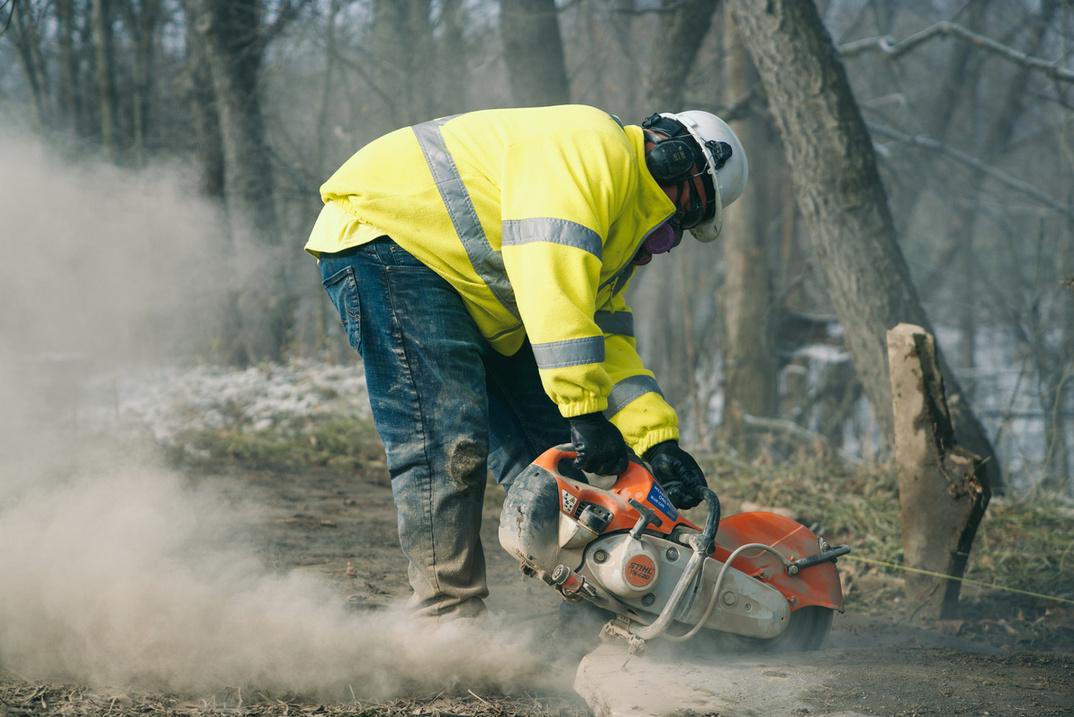
Our customers have created:
Over $51 billion dollars worth ofestimates 78+ million individual employeeclock-inscaptured
Here's How You Build A Better Landscaping Business And Maximize Profit
Budgeting
Grow your landscape company with the right blend of skilled labor and equipment and make a profit on every job.
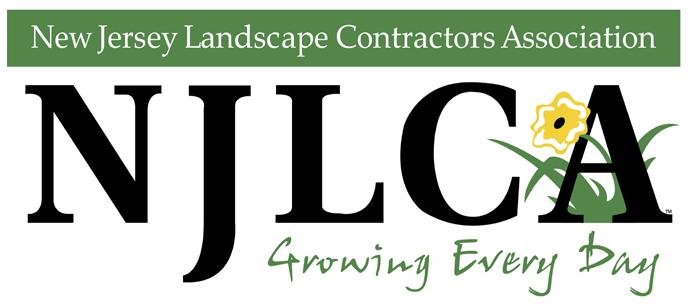
Customer Management
Elevate customer and workflow management, get approvals faster and create transparency.
Estimating
Build profitable estimates faster.
Scheduling and Time Sheets
Manage your schedule, track time quickly and accurately, and simplify payroll.
Invoicing
Automated invoicing from timesheet data.
Job Costing
Increase profits, estimate accurately and eliminate spreadsheets.
245,000 Green and Snow employeesmanageddailyon LMN

Companies who use LMN realize10-15+%inadditional annualrevenuegrowth
LMN Pro ‘2023 NJLCA MEMBER Offer
On the purchase of LMN's Pro+ Business Management Software, member receives 25% off Professional Implementation ($211 savings) +
FREE 2 months LMN Business Management Software ($788 savings) +
FREE Unlimited users for 2 months ($400+ value)

Total Association Member Savings: $1,399

“Wish I would have had LMN when we started 17 years ago! I tell every single landscaper I know about LMN. It completely changed our business! If every single landscaper used it, then it would be better for the entire Industry.”

GOLMN.COM
https://share.golmn.com/NJLCA
WE ARE PROUD TO PARTNER WITH - NO LIMITS LANDSCAPING, INC.
NEWS FROM THE PACIFIC NORTHWEST & SOIL UPDATE
by Todd Pretz, Vice President of Jonathan Green
Updates from the Production Region: Grass Seed Field Inspection Report
A wet and cold winter was followed by a wet and cold spring. Record rainfall and consistent cool, cloudy weather in the Willamette Valley, along with heavy snowpack in the mountains, set back grass seed production fields by weeks.
If you’ve kept an eye on the weather in the West you’ve probably heard that the extended drought in California has ended, and historic amounts of rain and snowfall took its place. The snowpack in the Sierra Nevada and Cascade Mountain ranges is the largest recorded since 1969 (250% above average snow fall amounts). In fact, the snow is so deep that some ski resorts may stay open right through the summer.
These record amounts of moisture have also affected the grass seed fields. Nearly 40% of tall fescue and ryegrass fields are in poor shape. According to one field man, “We are at least three weeks behind where we should be at this time of year in many grass seed fields.”

Jonathan Green continues its efforts to breed and produce the very best tall fescues. The demand for high quality grass seed to sell to sod growers, lawn care operators and independent retailers continues to grow. We’re establishing relationships with the best grass seed growers now to ensure our future supply of the best quality grass seed varieties.
1. Soft-Blade Tall Fescue cut from a test plot on the research farm
2. This new Black Beauty Tall Fescue spreads uniformly from the crown
3. This next generation of Black Beauty Tall Fescue can grow an extensive root system (up to 4 ft. deep)
4. Soft-Blade’s uniform growth habit looks so much like Kentucky Bluegrass that even some experts have a hard time telling the difference
Crop Yield and Price - Estimates for Sod Growers
Tall Fescue of sod quality is already in limited supply. The next crop is estimated to be only about 75% of last year’s harvest because the acres devoted to tall fescue production are reduced. It is expected that the price for sod quality tall fescue seed will be steady or higher going into July’s harvest and through all of 2024. It is expected that the price for sod quality tall fescue seed is already as low as it is going to be through 2024.
Kentucky Bluegrass - Dryland production regions are in better shape due to more rainfall this winter. The supply of sod quality from the irrigated production of Kentucky Bluegrass is adequate at this time so selling prices should remain stable.

Perennial Ryegrass is available now and the prices are stable but there are also fewer acres in production so expect perennial ryegrass prices to strengthen as the supply of high quality seed tightens after the July 2023 harvest.

20 Summer 2023
Tall Fescue Production Field
Perennial Ryegrass Production Field
Fine Fescues - The creeping red fescue crop in Canada has not recovered and the acres devoted to produce it are much lower than in years past. There is little downward price pressure on the high-quality creeping, chewings and hard fescues grown in the Silverton Hills of Oregon. Many grass seed companies have been reducing the fine fescues in their seed mixtures by using more tall fescues, which are also very shade tolerant. This trend is putting pressure on the availability and price of tall fescue.
The Importance of Soil
Given the vital importance of soil to growing a lawn, it’s surprising that most people don’t venture beyond the thought that good soil supports grass plant life and poor soil does not.


What is Soil?
Soil is all the loose, unconsolidated, mineral and organic matter in the upper layer of the earth’s crust. Minerals and humus make up the solid portion of soil; how-
ever lawns and plants require oxygen and water. The voids between individual mineral and organic particles are filled with air and water. Few of us appreciate how crucial bacteria are to the life of green grass plants. Healthy soil is actually a living, breathing, dynamic substance. It is literally crawling with earthworms, moles, grubs, centipedes, millipedes, snails, slugs, beetles, ants, fungi, insect larvae, bacteria and many other organisms. Surrounded by countless life forms, earthworms play a unique role in the soil. They range in number from a few hundred to more than a million per acre. They digest organic matter, recycle nutrients and make the superficial layer of the earth soil richer and porous. They are nature’s aerators.
There is a direct relation between the amount of organic matter present in the soil and the number of microorganisms. Since a relatively large proportion of the organic matter is present in the upper six inches of the soil, one should find a correspondingly high proportion of microorganisms in the surface area of the soil.
There is gradual increase in the number of microorganisms from early spring to summer and a decrease from late summer to midwinter due to temperature.
The organic matter in the soil is constantly being devoured by the microbial life of the soil, which depends on it for food. This organic matter, humus, being largely of plant origin, is made up of carbohydrates, proteins, fats, organic acids and other compounds found in plants. Ultimately, organic residues in the soil are reduced to carbon dioxide, water and minerals.
What is pH?
Soil pH is considered a master variable in soils as it affects many chemical processes. pH specifically affects grass plant nutrient availability by controlling the chemical forms of the different nutrients and influencing the chemical reactions they undergo. pH is a measure of the acidity (“sourness”) or alkalinity (“sweetness”) of soil. The scale ranges from 1 to 14, but few soils are more acidic than 5 or more alkaline than 9. A pH of 7 is neutral, however lawn grass plants grow best when pH is slightly acidic, about 6.8. If you don’t have the proper soil pH, say, “Good-bye” to a great-looking lawn! In fact, you can be wasting between 20% and 70% of your lawn fertilizer if your pH is not adjusted in the correct range.
Testing for Compaction
By pushing a screwdriver into the soil, you can test how compacted your lawn soil may be. If this proves difficult, this would indicate compacted soil. You may also want to remove a square foot of lawn grass. Dig into the soil beneath the turf with a spade, if this proves to be difficult the soil is compacted. The darker soil indicates humus content. The deeper the layer of darker soil, the better for lawn grass growth.

Todd is the Vice President of Jonathan Green, a leading supplier of lawn and garden products in the northeast. Jonathan Green Inc. is a leading supplier of grass seed, soil enhancers, fertilizer, and organic lawn and garden products. For more information visit www.jonathangreen.com.

www.NJLCA.org 21


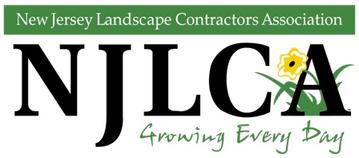
Spring/Summer 2021 22 Operations Management Event September 6-7th, Bensalem PA Deep dive into field operations, snow plowing strategies, site engineering, and event management
YOUR
SPONSORED BY AND LOCATED AT: Recruiting Training Site Planning Equipment Management Liquids Weather Forecasting Become an Expert in... Scan For Agenda, Details, and Registration: Or Visit SnowfightersInstitute.com IN ASSOCIATION WITH:
LEVEL UP
SNOW BUSINESS.
Wired for Brighter Nights
by Joe Bolognese, SiteOne Landscape Supply
As landscape/ hardscape contractors, you are always looking for ways to enhance the beautiful and exceptional work that you perform each and everyday for the thousands of residential and commercial clients you have. Intricate patios, pool decks, waterfalls, planting beds, privacy hedges, etc. should be the focal points both in the daytime and evening hours. Low voltage landscape lighting can offer a wide array of opportunity to enhance those awesome scapes with both illumination and safety.
Using a combination of path lights, well and mini well lights, spot or bullet lights, wall and ledge lights and others can give a home the added effect of height and space that helps with curb appeal and also can raise the appraisal value of the home.
But of course the largest factor of low voltage lighting is the safety element. Creating an illumited home and landscape helps your customers navigate the property and shed “lite” on possible intruders (human oranimal) and can help avoid unwanted confrontations.
1. Identify Key Areas:
Begin by assessing the outdoor space and identifying areas that require adequate lighting for safety. These areas typically include pathways, stairs,
entrances, driveways, and potential hazards such as uneven terrain or water features. By focusing on these key areas, you can significantly reduce the risk of accidents and ensure a well-illuminated pathway for your clients.
2. Choose the Right Fixtures: Selecting appropriate lighting fixtures is essential for achieving both functionality and aesthetics. Path lights, spotlights, and well lights are popular choices for landscape lighting. Additionally, consider incorporating motion sensor lights near entrances for added security.

3. Strategic Placement: The placement of lighting fixtures plays a vital role in enhancing safety. Position path lights along walkways and stairs to provide clear visibility and guide individuals safely. Spotlights can be utilized to highlight potential hazards, architectural features, or points of interest.
4. Lighting Techniques: Experiment with various lighting techniques to achieve the desired safety and ambiance. For instance, consider employing “grazing” to illuminate textured surfaces, such as stone walls, to add depth and visual interest. “Silhouetting” can be used to create
striking effects by placing lights behind objects, casting their shadows against walls or fences. These techniques not only enhance safety but also add a touch of artistry to the outdoor space.
6. Maintenance and Regular Inspection:
Once you have installed landscape lighting, ensure regular maintenance and inspections to keep the system in optimal condition. Check for any damaged wires, loose connections, or burnt-out bulbs. Trim vegetation around fixtures to prevent obstruction of light and maintain the desired illumination levels. This is an excellent add-on service that can increase revenue.
Landscape lighting not only enhances the beauty of outdoor spaces but also contributes to safety and security. By strategically selecting lighting fixtures, placing them thoughtfully, and incorporating energy-efficient options, you can create a well-lit environment that ensures safe navigation and enhances the overall appeal of property. So, illuminate your clients’ outdoor spaces wisely and they will enjoy the added benefits of safety and aesthetics that landscape lighting brings.
Low voltage landscape lighting like the Pro-Trade®️brand offered only at StieOne Landacape supply stores, can really “brighten” your land/hardscape lives.
Joe Bolognese is Department Manager of Irrigation and Landscape Lighting at SiteOne Landscape Supply in Mahwah, NJ. He is a past Vice President and Associate Director of the NJLCA. He Chairs the By-Laws, Education, Licensing / Certification & Scholarship Committees. Joe has been an active member of the NJLCA for over 20 years and has over 25 years experience in the Landscape & Irrigation Industry, working for several well known distributors including John Deere Landscapes, Shemin Nurseries & Atlantic Irrigation, which are all now SiteOne. Joe is always actively and passionately advocating for the NJLCA membership through Education.
23
Photo courtesy of Exclusive Stoneworks, winner of NJLCAs 2022 Landscape Achievement Awards in the Lighting Category.



WWW.FOLEYINC.COM WE CREATE CUSTOMER EXPERIENCES THAT CREATE CUSTOMERS FOR LIFE. Serving all of New Jersey, Staten Island, New York, Eastern Pennsylvania, and New Castle County, Delaware Whether you are looking to buy new or used, rent equipment, or have your existing fleet serviced, Foley, Incorporated has what you are looking for. In addition to Cat equipment, we offer all types of allied products, such as air compressors, light towers, trenchers, wood chippers, heaters, small compaction equipment and more. BUY HERE. RENT HERE. SERVICE HERE.
Today’s Weather Is Unpredictable: Keep Your Outdoor Power Equipment Ready
 by the Outdoor Power Equipment Institute
by the Outdoor Power Equipment Institute
Weather today is unpredictable, and the Outdoor Power Equipment Institute (OPEI) reminds home and business owners that it’s important to make sure you have the right outdoor power equipment on hand and to keep equipment in good working order year-round.
A chainsaw or pole saw can trim limbs ahead of a storm or handle clearing debris. A generator will power appliances and keep lights on and cell phones charged when utilities go down.
A string trimmer and chainsaw can remove combustible material around your home.
A utility vehicle can be maneuverable and is smaller than a car, helping transport people and supplies quickly in an emergency.
“Weather is unpredictable and thankfully, there is a product and power source) for every need and to address every scenario.
We no longer have just one hundred year storms and it’s important to be prepared year-round,” said Kris Kiser, President & CEO of OPEI, an international trade association representing manufacturers and suppliers of outdoor power equipment, small engines, battery power
systems, portable generators, utility and personal transport vehicles, and golf cars. OPEI offers the following tips to help home and business owners:
Get ready now - while you can.
The power grid is aging, and It’s not handling severe weather well. The nonprofit news organization Climate Central found that that by the 2000s, there were 10 times more major power outages reported each year, compared with data from the 1980s and 1990s.1 Before a disaster or storm strikes is the best time to buy outdoor power equipment.
Know your needs.
Look at your home or business. Determine what needs to be cleaned up or tidied before severe weather arrives. Decide what equipment is needed to keep people and property safe before and after a disaster or power outage. Factor in clean - up needs and requirements.
Do your research.
Outdoor power equipment has changed a lot from what you might remember from your childhood. The industry is rapidly innovating with equipment becoming faster, lighter, more efficient and stronger. There

is a lot of information available online from manufacturers and users. Talk with store personnel by phone or in person and get their recommendations.
Buy what fits your needs.
There is battery, electric and gas fueled power equipment on the market. Each has different maintenance and care requirements, and equipment is sized for different levels of need, so it’s important to buy what works for your situation.1

Think ahead and purchase accessories.
Buy outdoor-rated extension cords for generators, and consider getting an approved cover for your generator for rainy weather. Buy and install a carbon monoxide detector if purchasing a generator. Plan now where the generator will be set up (never in a home or garage, and always away from your home and any air intake) and determine how to secure it if necessary. Purchase safety equipment like chaps, eye protection or hearing protection if needed. Gasoline-powered outdoor power equipment uses E10 or less fuel and most manufacturers recommend adding a fuel stabilizer. Fuel that is more than 30 days old may phase separate and cause running problems, so it’s important to purchase fuel just ahead of a storm. Only use an approved fuel container.
Review manufacturer’s directions and maintain your equipment.

Always read the directions provided by equipment manufacturers and be sure to follow all safety and usage recommendations. Save a digital copy of the owner’s manual on your computer if possible, so it can easily be consulted in the future. Equipment needs to be maintained, so add calendar reminders for regular maintenance.
Source: https://www.npr.org/sections/ health-shots/2021/05/15/996872685/growingpower-outages-pose-grave-threat-to-peoplewho-need-medical-equipment-to-
www.NJLCA.org 25
THE EMPLOYEE TERMINATION PROCESS
by Steven Cesare, Ph.D., The Harvest Group
A business owner called me the other day to talk about a pending employee termination that he was going to conduct. As he expressed, the termination was long overdue and now it was simply time to complete the process. Despite that acceptance, like many managers, supervisors, and owners, he was uncertain about the exact ritualistic steps to take in order to ensure legal compliance, procedural efficiency, and minimal disruption to the company culture. I proposed the following five-step plan to guide his actions.
1) MEETING PREPARATION
The first thing I told the business owner was to never have any supervisor conduct a termination meeting alone! In today’s overly litigious work environment, there is too much inherent risk for any company representative to terminate any employee in a one-on-one format. Those days of dyadic meetings are long gone. Spurious claims of harassment, discrimination, or offensive commentary are all too common in termination meetings, which eventually became a truth test between the all-too powerful supervisor and the weakened, victimized employee. Guess who the jury is going to believe in that paradigm? Accordingly, supervisors must always conduct a termination meeting with a passive observer (e.g., Human Resources, Office Manager, other supervisor) present to validate the supervisor did not make any provocative or inappropriate comments to the employee.
Next, in a further act of preparation, the supervisor must have all administrative forms and documentation in his/her
possession at the meeting. This is game day; everything has to be well organized to ensure a single, efficient meeting, bereft of any follow-up. For example, the supervisor should have: (a) the Employee Termination Form which the employee will need when s/he files for unemployment, (b) all relevant COBRA information to sustain medical benefits coverage, (c) 401(K) plan rollover details, (d) a copy of the Employee Confidentiality and Non-disclosure Agreement the employee signed during his/her New Employee Orientation session stating the employee will not try to solicit employees, clients, or independent contractors away from the employer for the stipulated timeframe, (e) verification of the employee’s current address such that the year-end W2 form will be sent to the proper location, and of course, (f) all relevant compensation (e.g., final paycheck, outstanding reimbursements, and as required by state law and company policy, payment for any accrued/granted but unused vacation or Paid Time Off hours).
In general, it is my professional opinion that all termination meetings should be completed in less than 15-20 minutes. While some disagreement or discussion is probable, there is no time for debate. The decision has been made, it is supported by management, and now must be conducted with straightforward deliberation. The longer the meeting lasts, the more likely the employee will get the supervisor to say something regrettable, capable of being leveraged to illustrate an inkling of discrimination.
2) THE DECISION
During the actual termination meeting, the supervisor must always remain resolute, calm, and confident, showing appropriate eye contact to the employee. It is imperative that the supervisor never lose control of the meeting agenda, pace, or outcome. Like all other skills, practice makes perfect.
With that framework in mind, it is important to note that most employee terminations (i.e., not retirements) are usually due to either a job performance problem (e.g., poor job quality, not meeting performance expectations, consistent inefficiency) or a violation of company policy (e.g., attendance, harassment, safety). Within that two-fold premise, I suggest the supervisor follow either Statement 1 for a chronic performance problem, or Statement 2 for a company policy violation.
Upon employee arrival, the supervisor should explain the meeting purpose to the employee.
• Statement 1:
» “As you know, you and I have had several meetings over the past several weeks/months to discuss your performance-related issues (e.g., interpersonal skills, accuracy of work).
» Despite that coaching, your performance has not improved to the required level of your position
» Due to that fact, today will be your last day of employment with this company.”

26 Summer 2023
HR Insights
» “An investigation has provided us with evidence that you violated company policy (e.g., sexual harassment, alcohol use, timecard fraud) on (specify date).
» As stated in the Employee Handbook that you signed on (specify date), that policy violation has the consequence of employee termination.
» Due to that fact, today will be your last day of employment with this company.”
Again, please be reminded, the less the supervisor says, the better the result will be. Once the supervisor conveys that message, s/he should be prepared for any possible response from the employee.
3) EMPLOYEE RESPONSE
The range of employee responses to this life-changing event is panoramic, including anger, swearing, verbal attack, disbelief, crying, etc. Let the employee vent, express shock, or ask questions. Regardless of the response, the supervisor must remain placid, not acting guilty, condescending, aloof, or intimidated.
While this event may be stressful to the supervisor, it is potentially catastrophic for the employee (e.g., lack of income, humiliation, unstable future). Do not respond emotionally to the employee; rather, simply stay focused only on the content conveyed in either Statement 1 or Statement 2. When in doubt remain quiet; when challenged, merely restate the evidence and the appropriate Statement.
No matter what the employee says, the supervisor must not take the bait! Never give up control of the meeting agenda, pace, or outcome. Never. The supervisor’s remorse, apology, or condescending tone will be duly noted by the employee, ultimately used against the supervisor as probative evidence when the inevitable wrongful termination subpoena is delivered to the company’s place of business.
4) ADMINISTRATIVE PROCESS
After the employee’s responses and supervisor’s rebuttals have occurred, the
supervisor must now proceed with the administrative facet of the meeting. At this point in time, the supervisor should have a master list of all outstanding company materials (e.g., keys, cell phone, files, tools, gas card) assigned to the employee throughout his/her tenure with the organization, and request they be returned at this time. All electronic devices (e.g., cell phones, laptops, tablets) should be accessed by the supervisor utilizing the employee’s log-in identification and passwords, while the employee and the passive observer are present.
Following the return of all company materials, the supervisor should present all the aforementioned administrative documents (e.g., paychecks, COBRA, 401(k) information) to the employee. Likewise, the supervisor should request the employee sign the Employee Termination Form acknowledging the administrative details. If the employee fails to comply with that standard request, the passive observer will note on the document “Employee Refused to Sign this Document” accompanied by the observer’s initials and the date of the meeting.
Despite the momentary administrative focus of the meeting, the employee may likely still be in an emotional state replete with continued accusation, sarcasm, or victimization. Be forewarned, the supervisor must maintain his/her professional poise throughout the entire meeting, never deviating from the purpose at hand. No matter what is said (e.g., comments about the supervisor’s body parts, the supervisor’s mother or children, the supervisor’s personal character or professional standing), the supervisor must not take the bait! At the risk of being repetitive, when in doubt remain quiet; when challenged, simply restate the evidence and the appropriate Statement. If the supervisor follows this sequence as defined, the termination meeting will be over soon enough, without incident, error, or revision.
5) EXIT
As the meeting comes to a muchappreciated conclusion, the supervisor should sincerely state “I wish you the best as you continue in your career.” Then, the observer should escort the employee to his/her workstation to retrieve
any personal belongings from his/her desk, locker, or storage unit.
At no time during this phase of the termination process should the employee be left unattended to use the restroom, say good-bye to other employees, or go into the breakroom. Any lapse of direct sight provides an opportunity for the employee to fake a workers’ compensation injury, take something that does not belong to him/her, or even install a virus on the company computer system. I know you don’t believe me, but these things really do happen. Revenge is a boundless emotion.
Once the employee has safely left the company premises, not just the office, but the actual physical boundary of the company location, the observer and supervisor should debrief the meeting, compare notes, summarize everything in writing, and forward that documentation, as well as all signed forms and all returned resources to the Office Manager or Human Resources immediately for proper record keeping in the employee’s personnel file which will be repositioned to the Terminated Employee File Drawer.
Beyond this closure, it is critical to be reminded that no company employee, especially management, ever comment or criticize the terminated employee, in that such remarks frequently become the foundation for a lawsuit centered on post-termination retaliation. When asked, any management employee should be instructed to state that “Employee Name and the Name of the Organization have decided to move forward on separate paths.” No other explanation is needed, useful, or apposite.
CONCLUSION
As we all know, employee termination meetings are stressful events, for the employee, the supervisor, and the company. It is hoped that the outline presented above offers a degree of predictive direction that will minimize any unnecessary stress, disruption, or litigation.
If you have any questions or comments about this topic or anything else related to human resources, simply call me at (760) 685-3800.
• Statement 2:
27 www.NJLCA.org
Above- & UnderGround Partners: That is what urban trees are missing
by Wei Zhang, Tree Diaper & Dean Alberty, Deep Roots Microbiome
A third-grader can tell you that trees need water, sunlight, CO2, nutrients, and minerals. That probably is enough for a tree in the forest, but not enough for urban trees. What is missing from urban trees? Partners, above- and underground.
Almost all species we use in urban environments evolved in forests with their friends and family over millions of years. None of them, including those cultivated, evolved in forests of concrete and asphalt. The difference is obvious.

Young trees get shade from mature trees in the forests to protect them from the scorching sun. The leaf shade from mature trees protects the young trees over the winter and leaf litter also makes great compost. These are the above-ground partners. Equally important are the underground partners in the root and soil microbiome. It is critical for the survival of saplings and for them to thrive. In the natural forest, it is easily passed on from the mother trees to the offspring.
How do we build the modern urban environment? We clear all the trees and sell them for lumber, strip off the topsoil, compact this soil with heavy machinery, and pour concrete and asphalt on top of it before planting some saplings in the tree pits dug into the compacted soil. After that, we spray tons of herbicides and pesticides on the soil. Many trees have their rootballs dipped into insecticide baths when crossing state borders. We apply truckloads of deicing salt on roads during wintry weather conditions. After all the above processes, how many of the beneficial microorganisms are still there? Even if we have a few survivors, is there any food (organic matter), oxygen, or moisture for them to survive and thrive?
Below we use three cases to illustrate why these aboveground and under-ground partners are so important.
Case #1, the Big Willow Oak Brother: This case was discovered in Ashland, VA at the intersection of England St. and N. Washington Hwy. 4. Willow Oak trees with about 8” caliper were planted beside a bank building in 2016. Every one of these trees has diebacks. Two were removed by April 2023. It won’t be very long before someone removes the third tree. We did
notice the 4th tree is doing fine. For 7 years, it has had minimal dieback and we believe it will survive. What is the difference? The 4th tree has a big brother next to it.

28 Summer 2023
Case #2 Proper Soil Moisture and Soil Microbiome Makes the Difference: We all know that soil moisture is crucial for the survival of urban trees. Promoting a healthy soil microbiome is also very important to the survival of urban trees. Let’s delve into the importance of these factors and their relationship to tree well-being.
Adequate moisture in the soil is necessary for the uptake of water through the tree’s root system. It serves as a transport medium for essential nutrients, ensuring their availability to the tree. Insufficient moisture can lead to water stress, which weakens the tree, makes it more susceptible to diseases and pests, and hampers its ability to photosynthesize effectively. Conversely, excessive soil moisture can lead to root rot and oxygen deprivation, causing the tree to decline or even die. Maintaining a proper balance of soil moisture is vital for optimal tree health.
The soil microbiome plays a significant role in supporting tree health. Beneficial microorganisms, such as bacteria and fungi, contribute to soil structure by creating aggregates that improve waterholding capacity. They also assist in the decomposition of organic matter, enhancing soil aeration and preventing waterlogging. At the same time, proper soil moisture boosts the population of these microorganisms and keeps the bad ones in check. Additionally, certain microorganisms form symbiotic relationships
with tree roots, facilitating the absorption of water and nutrients. For example, the mycorrhizal associations extend the root system’s reach, enabling trees to access moisture in a larger soil volume. Below is a picture taken from our backyard where soil moisture was kept at an optimum level and the microbial community was maintained at a high level.

Case #3 Earthworms are valuable allies for urban trees: Their activities improve soil structure and soil aeration, enhance nutrient cycling and soil fertility, regulate soil moisture, suppress diseases, and promote biodiversity, especially soil microbiome. Healthy earthworms require organic matter as food and proper soil moisture. Their soft and permeable skin needs to stay moist for efficient gas exchange. Soil moisture influences the microbial com-
munities present in the soil, and these microorganisms play a significant role in earthworm ecology. Moist soil conditions promote the activity and growth of beneficial soil microbes, such as bacteria and fungi, which contribute to nutrient cycling and provide a food source for earthworms. During the 2021 Central Virginia drought, we visited a few sites where we have TreeDiaper treemats installed. We were astonished by the number of earthworms under these treemats. See the whole video on youtube: https://youtu.be/cN-vH0zs0Uo.
At the same time, the soil microbiome with healthy and active earthworms is significantly improved. See the picture below for a site where bacillus bacteria mycorrhizae were carried around by earthworms to areas that are far from the area we applied the soil microbials.



Wei Zhang holds a Ph.D. degree in Engineering from Virginia Tech. He has been doing research & development for the green industry for 15 years. His research areas include watering solutions for landscape plants, relationship of soil/ water/air, plant protection against stresses like drought and road salt. His work also provides novel solutions to green stormwater infrastructures, for which plants are used for the treatment of pollutants in stormwater.
Dean is the Senior Chair of the Missouri Community Forestry Council. The Chair position helps set the course of our council and promotes growth and development for our organization. The Council covers the State of Missouri Urban Forestry professionals and stretches to neighboring states that benefit from the extensive organization and growth of the Missouri Council. In addition, Dean is involved in growing better trees and helping people grow better trees as CEO of Deep Roots Microbiome Company from the years of experience improving tree growth and production.
www.NJLCA.org 29
Case #3
Case #2
Protecting Your Legacy: Why Business Owners Need to Act
 by Phil Harwood, Grow the Bench
by Phil Harwood, Grow the Bench
After speaking on this very same subject in front of a crowd of business owners, one of the attendees came up to me to thank me and to share a sad story. The day before, he attended his uncle’s funeral. His uncle – a husband, father, and business owner – passed unexpectedly and without making any preparations. Everything his uncle had worked so hard for was in turmoil. His family, employees, and customers were left not knowing what to do. A tragic situation became a huge mess that everyone left behind had to clean up. Unfortunately, this was the legacy his uncle left behind. The attendee wiped away his tears and promised that he would never do this to his family, employees, or customers. He was going to take action immediately to protect his legacy.
“Protecting your legacy” simply means planning in advance to provide for your those you care about. Your legacy is what you will be known for after you’re gone. It is what your life’s work meant to your family, friends, and community. If you are a business owner, your legacy also includes the impact that you have made in the lives of your business partners, employees, and perhaps even within your industry. After you are gone, how do people think of you? What will people say of you? This is your legacy.
Something else to consider is the reality of first and last impressions. It is common knowledge that first impressions are more powerful than subsequent ones. The same is true for last impressions. We usually remember the first time we met someone. And we usually remember the last time we interacted with them. We probably do not have as vivid memories of all of the interactions between these two events.
Similarly, your final interaction with your closest loved ones will be directly
related to the plan that you have in place to provide for them and to handle your affairs. This will define your legacy to a significant degree.
Many people avoid thinking about these things for all the obvious reasons. However, your legacy is at risk if the inevitable is not addressed before it’s too late. If you’re still not convinced that you need to take immediate action, here are three reasons why I believe you should.
First, other people are depending on you to do the right thing. If you’re like most business owners, doing the right thing has been one of the hallmarks of your career. People respect you. They admire you. You have sacrificed greatly for others. You’ve made an impact. Your fine legacy will be protected by ensuring that the last interaction will be a result of you doing the right thing one last time. Your final act will be consistent with the rest of your life and this is how you will be remembered. This is a thoughtful, loving thing to do and a beautiful legacy.
Second, the process is not as difficult or scary as you may think it is. Every situation is slightly unique. But the overall planning process does not need to be overly complex. In fact, some basic first steps to protecting your legacy may be very simple to implement. Do not let the fear of complexity prevent you from taking action today.
Third, there is great comfort and peace of mind that comes with knowing that your loved ones have been taken care of. One of life’s greatest joys is to not have regrets, especially about things that we have control over. Planning for your affairs is entirely under your control. Just think how great it will feel when your plan is in place and your legacy is protected.
If you’re not sure where to start, please email me at phil.harwood@
tamariskadvisors.com and I will send you a complementary guidebook that will give you concrete steps to take to get moving so that you may protect your legacy.
Before you put this off until tomorrow, consider that procrastination may actually be an irresponsible and selfish act. It may actually be your last act and final interaction. Protect your legacy by taking action before it’s too late. What’s your next step?
Now go forth.
Phil Harwood is a managing partner and co-founder of GrowTheBench. com, one of five companies he has founded or acquired since retiring from a successful management career spanning over four decades. He also is co-owner of the Snowfighters Institute, which offers educational and networking events for snow and ice management professionals. He is widely considered as one of the leading consultants in the professional landscape and snow management industries in North America.
Phil holds an Executive MBA with honors and Bachelor of Arts degree in Marketing, both from Michigan State University. He is currently pursuing a Juris Doctor degree to better equip him to assist his business clients with succession planning and business law. Phil is a member of the State Bar of Michigan, Grand Rapids Bar Association, Christian Legal Society, and Federalist Society.
Phil has a passion for helping business owners increase the performance and value of their businesses. His consulting firm, Tamarisk Business Advisors, helps business owners with business succession, valuation, and building value in companies prior to succession.

30
Summer 2023
Landscape AlterNATIVEs: A Guide to Native Landscape Plants EASTERN WHITE PINE (PINUS STROBUS)
by Steven Yergeau,
Native plants are a good way to incorporate sustainable vegetation into yards for clients who are environmentally minded. Native plants are adapted to local climate and soil conditions, requiring less water, fertilizers, and pesticides than non-native vegetation. For landscapers who have property owners looking for native vegetation, below is an option to meet your clients’ needs.
Eastern white pine (Pinus strobus) is an evergreen conifer, a cone-bearing plant with needles instead of leaves. It is one of the largest conifers found along the East Coast, growing to 150 feet and spreading to 40 feet at maturity.
Eastern white pine is identified by the cluster of five needles on its branches (Figure 1). These needles are flexible, grow up to 5 inches long, and bluish-green in color. While considered an evergreen, eastern white pine needles can become
 &
Agent (Ocean &
&
Agent (Ocean &
brown and drop in the fall. If the needles drop during other times of the year, it may indicate the tree is under stress (for example, from excessive watering or rain).

Its pinecones have seeds eaten by a variety of animals such as squirrels, deer, mice, and songbirds. The cones grow up to 8 inches long and mature in the fall. Any maintenance of eastern white pine needs to account for these cones which can be a nuisance if left on lawns. One use of the cones is in holiday decorations such as wreaths.
Eastern white pine grows in a wide range of soils but does well in welldrained sandy soils. It can grow in moist soils but it is best to avoid saturated soils and heavy clays. It grows best in acidic and slightly acidic soils (pH <7.0). Eastern white pine does well in open, sunny areas with little to no shade.
Eastern white pine provides year-round foliage as a privacy screen, hedgerow, or windbreak (Photo 2). It is a good choice to use instead of non-native evergreens, such as Norway spruce (Picea abies), gold thread cypress (Chamaecyparis pisifera), and Colorado blue spruce (Picea pungens). You can find nurseries in New Jersey that sell native plants by visiting the JerseyFriendly Yards website at http://www. jerseyyards.org/jersey-friendly-plants/ where-to-buy-native-plants/.

Steven Yergeau, Ph.D. is the Dept. Head and Agricultural Agent for Rutgers Co-operative Extension of Ocean County. He is also Assistant Professor for Ocean & Atlantic Counties. For more info visit http:// ocean.njaes.rutgers.edu.

www.NJLCA.org 31
Agriculture
Natural Resources
Atlantic Counties)
Photo 1: Close up of the needle clusters on eastern white pine. (Photo Credit: Steve Yergeau)
Photo 2: A row of eastern white pine acting as a screen between a road and detention basin. (Photo Credit: Steve Yergeau)
YOU’RE EITHER AT THE TABLE OR ON THE MENU
The more things change the more they remain the same, right? Or so the cliché goes. While I have been in the professional lawn care business for forty years, I am only about six years into my second career as an advocate for our industry. Stepping into my new role, I discovered a world of pesticide and fertilizer policy that exists largely out of view of the professional applicator community yet directly affects everything that we do.
First, there was the EPA. Much to my chagrin, we had no relationship with their Office of Pesticide Programs at all. At one of the first conferences that I attended, I recall my then-boss making a big deal out of meeting the guy who was the head of that office. Not an auspicious start for an industry that relies upon the pesticide products that the agency registers.
Then there were a multitude of organizations and associations known only by their cryptic acronyms: AAPCO, SFIREG, PPDC, AAPFCO, OPMP, EIEIO (okay, okay,
by Bob Mann, National Association of Landscape Professionals
that last one is an association of elderly farmers named McDonald…). Each of these organizations represents a cog in the wheel of how our regulatory system communicates with one another. For instance, perhaps you’ve heard of the issue of PFAS in pesticides that recently made headlines. The group known as SFIREG (that’s pronounced “sah-fy-reg”) is a working group of state and federal regulators that tackles difficult pesticide issues and has been leading the effort to unravel the PFAS gordian knot.



The odd thing about SFIREG is that the meetings are always more popular than the organizers realize, resulting in us attendees practically sitting in each other’s laps and hanging from the chandeliers just to be in the room. These groups are understandably focused upon agricultural uses of pesticides; our job is to make sure that the non-agricultural uses (lawn and landscape, mosquito and tick as well as pest control) do not get left out of the discussion.
One way we do that is by participating in a group called PPDC, which stands for Pesticide Program Dialog Commit-
tee. This is an EPA forum that includes appointed members from across the entire spectrum of pesticide policy, from farmers to manufacturers and from landscapers to environmental non-profit groups. My first PPDC meeting was just after I was hired at NALP and was hugely intimidating. The meeting was held at the EPA’s office in Crystal City just steps away from Reagan Airport outside of Washington. I knew no one and no one knew me.
The subject matter being discussed was way over my head, topics I had never heard of even though I had been a professional applicator for four decades. Fortunately for me, some kindhearted people took me under their wings and introduced me to people and included me in their circle. After five years of attending and paying close attention, I was able to secure a seat on this committee last year representing the lawn and landscape industry.
That’s the funny thing, we’re a closeknit group in the lawn and landscape industry and my observation is that those in the regulatory space are every bit as close knit. That doesn’t apply to everyone, however. Our opponents are not there to make nice. They’re there to put us out of business. And now, as Paul Harvey would say, here is the rest of the story.
32
Summer 2023
There are a number of federal laws that come to bear on pesticides, the most recognizable of which is FIFRA (Gosh... so many acronyms! This one means the Federal Insecticide Fungicide and Rodenticide Act). What you may not know is that the Endangered Species Act also has a role in the regulation of pesticides. The ESA states that any action by a federal agency (in this case the EPA’s registration of a pesticide) that may jeopardize an endangered species, or their critical habitat must be evaluated by either the U.S. Fish & Wildlife Service for terrestrial species or the National Marine Fisheries Service for aquatic species, together referred to as The Services.
The EPA has been in trouble with Federal courts lately for their practice of conditionally registering pesticides for use without first completing the ESA assessment. In fact, only 5% of all pesticides on the market today have completed this final step. This past December the Federal Court of Appeals for the 9th Circuit issued
a stinging rebuke of EPA’s handling of their ESA responsibilities asking how much longer the court must tolerate it. You can read between the lines as well as I can on this.
In response, EPA has undertaken an ambitious plan to bring the agency into compliance by publishing two iterations of their ESA Workplan. Condensed down to its essence, the workplan seeks to significantly speed up the consultation process by internalizing much of the work that would be done by The Services ahead of time.


Further, instead of evaluating pesticide active ingredients on an individual basis, EPA will be grouping pesticides together. For instance, instead of evaluating imidacloprid, clothianidin and thiamethoxam individually, the agency will group them together and evaluate their effects on non-target species (notice the change in what they’re evaluating there?) based on the fact that all of them are neonicotinoids.
While this will certainly make the process of evaluation quicker, the evaluation will lose much of its focus. We know that all three of these insecticides are vastly different in their efficacy on different insect pests and their adverse effects on pollinators.
The end result of this evaluation is to identify those endangered species and their habitat that will be adversely affect-
ed and then, when possible, list mitigation measures to reduce that risk. In agricultural settings, those mitigations might be prohibiting the use of the product in a county where the endangered species is found, or the use of low drift spray nozzles, or the installation of a border around the field made up of perennial grasses that are routinely maintained (in other words, a lawn, ironically).
What concerns us at this juncture is that much of the discussion surrounds agricultural uses of pesticides. With the exception of the rodenticides used in pest control, we haven’t seen much from EPA on non-agricultural uses. They promise that they’ll be taking up the issue soon and will be reaching out to us. Let’s hope that’s the case.
What we are going to need from you is involvement. Just recently, in another state that shall remain nameless, a very adverse piece of legislation that will directly affect the way we do business in that state was introduced. Despite our warnings and outreach we never got any real response from lawn and landscape contractors. The end result is that the legislation will in all likelihood be passed into law.
Our detractors will use this victory as a weapon in other states to pass similar legislation. Our opponents only have to win once; we have to win every time. Our job is to make our customer’s landscapes beautiful; our opponent’s job is to attack us. There lies the disparity. Make sure you have time and resources set aside to engage in the political process. As the old cliché goes, you’re either at the table or on the menu. It’s your choice!
Bob Mann is the Senior Director of Technical & Regulatory Affairs for the National Association of Landscape Professionals.
A native of Duxbury, Massachusetts, Bob graduated from the Stockbridge School of Agriculture with a degree in Turf Management and from the University of Massachusetts at Amherst with a degree in Agricultural Economics. Bob is, formerly the agronomist for Lawn Dawg and president of Weed & Feed Professional Services, Inc.
www.NJLCA.org 33
BUILD HIGH PERFORMING TEAMS
Greenius makes it simple and easy to train and develop staff and crews using on-demand training and 360-degree employee reviews whether you’re at the office or in the field.
Over 1.3 MILLION Greenius training courses completed
30,000+ HOURS of training videos consumed
On-demand Employee Training
Deploy an automated training program that ensures your teams get the training they need, when they need. Eliminate jobsite bottlenecks and rework incidents.
Expansive Tailgate Talk Library
Keep your teams focused on the objective and safe on the job site.
Performance Reporting
Better manage your staff with meaningful insights into their training, on-the-job performance and create a culture centered around continuous improvement.
360-Degree Performance Reviews
Pinpoint areas for growth and development while uncovering how you can build a team by using their immediate feedback.
Access Training on Any Android or iOS Mobile Device
Avoid wasted time between job sites.

WE ARE PROUD TO PARTNER WITH
GREENIUS 2023
NJLCA MEMBER
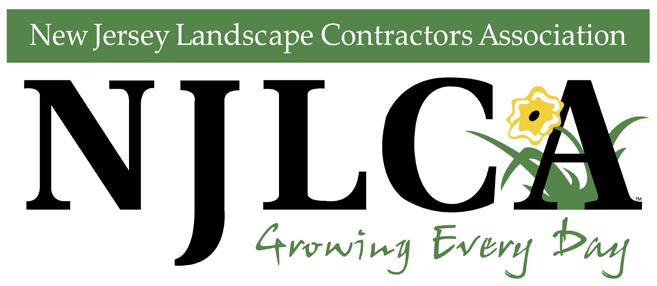
OFFER:
FREE 2-month license of Greenius Training Software ($250 savings) +

FREE Unlimited users 2 months ($200+ savings) +
FREE Unlimited Training Courses +
FREE Custom Implementation ($347 savings)
Total Association Member Savings: $797
GoGreenius.com
34
A QUARTER-MILLION+ landscaping employees trained with Greenius
https://share.golmn.com/NJLCA
NEW JERSEY STORMWATER RULE
MEANS $ ALES FOR PAVER INSTALLERS
Yes, another article on permeable interlocking concrete pavers (PICP) but due to recent events, it is critical to revisit this subject once again. When I first started promoting permeable pavers 20 years ago, one objection I heard was “no one around here accepts permeable pavements”. Over the past 20 years not only has that resistance broken down thanks to rigorous research by the paver industry, a new amendment by the state of New Jersey is potentially a game changer.
In March 2021 New Jersey amended its Stormwater Management rules (N.J.A.C. 7:8-5:3(b) to promote the use of green infrastructure (GI) for stormwater management. Permeable pavers are addressed in the New Jersey DEP Stormwater Best Management Practices (BMP) manual as a GI device.
Before we review the good business news for hardscape installers it would be instructive to review some terms and some highlights of this legislation. Green Infrastructure (GI) is described by the state as ‘a stormwater management measure that manages stormwater close to its source by: 1. Treating stormwater runoff through infiltration into subsoil; 2. Treating stormwater runoff through filtration by vegetation or soil; or 3. Storing stormwater runoff for reuse.’ “
The stormwater rules refer to “pervious” pavement systems which include permeable interlocking concrete pavers as per the BMP manual.
Permeable interlocking concrete pavers are paving blocks manufactured to the ASTM C-936 standard in a shape that allows #8 3/8” (with some exceptions as approved by the engineer) open graded aggregate to be accepted in the joints (also known as “voids”). The blocks sit on 2” of the same aggregate as a setting bed. Underneath is a 4” course of ¾” #57 clean stone, which sits on top of a minimum 6” #3-4 railroad ballast as per engineer’s specifications. The excavated and exposed soil is typically not compacted. Sand is not used and admittedly PICP is an atypical installation. The purpose of a sand set interlocking concrete pavement is to provide a wearing course for a walkway, patio, driveway, parking lot or street. A PICP serves all these functions, but as the GI definition states, prevents stormwater runoff and treats the stormwater by moving the water downward into the system.
While porous asphalt and pervious concrete are considered pervious pavements in New Jersey, PICP are precast at the jobsite and installed for immediate use regardless of most environmental and climate conditions. Many designers find them to be visually pleasing with many design options, and they provide multiple maintenance advantages versus alternatives.
A remarkable document has been produced by the state, MEETING THE GREEN INFRASTRUCTURE REQUIREMENT (N.J.A.C. 7:8-5.3) Fact Sheet. Some of the highlights:
by Daniel Moreland, Belgard
• Repeatedly mentions pervious pavements with diagrams and potential jobsite examples
• Asks three checkmark questions:
“1. Is the stormwater managed close to its source?”
Permeable interlocking concrete pavements are designed to not only handle rainwater directly distributed upon the wearing course, but as per New Jersey up to 3 times the square footage of any runoff surface flowing into the pavement. In other words, permeable pavements are designed to do what other adjacent surfaces cannot: accept stormwater runoff.
“2. Are the BMPs distributed throughout the site? “
While the screenshot for the fact sheet shows “permeable” asphalt as an example, obviously permeable pavers can be distributed at multiple areas on a jobsite.

3. Are the drainage area limitations met?”
As long as we follow the 3:1 rule in New Jersey, that combined with over 500” per hour proven infiltration rates the answer is obviously, yes.
-On pervious pavements, of which permeable pavers are a subset, The Fact Sheet states: “In addition to the water quality, quantity, and groundwater recharge benefits that pervious paving systems provide, they occupy little to no
35 www.NJLCA.org
developable land area on the site, since they are incorporated directly into the proposed roadways, parking areas, and/ or sidewalks of the site. This, plus the ability to provide compliance for all of the requirements, makes pervious paving systems the ideal choice to comply with the rule requirements all in one system.”

That sounds like a ringing endorsement to me! However, as a hardscapes installer, it cannot be expected that all of us are stormwater experts. So how can my business benefit from this law?
1. Become an Interlocking Concrete Pavement Institute (ICPI) PICP Specialist. When specifying PICP, designers often ask for contractors that have this designation. Visit icpi.org for more information on available classes.
2. If your company has experience installing PICP, add this to the marketing. Seems like everyone advertises they install pavers, but remember, not all pavers are permeable. As the demand for this product grows because of the new stormwater rule, an
installer will want to distinguish itself if they have a command of this technology. Even better yet to market a ICPI PICP Specialist is on the payroll.
3. Don’t limit to permeable pavements. Even if a landscape company does not install hardscapes, the new rules promote bioretention systems as well as other solutions that fall under GI. Learn as much as possible as to what New Jersey considers Green Infrastructure so the company is prepared when a client
36 Summer 2023
is required to take advantage of one of these techniques.
It is my hope that your business continues strong for 2023, and remember the companies that educate themselves and embrace these new technologies will have the upper hand should business get more competitive. Belgard has a full time stormwater engineer on staff, and is prepared to partner with any local municipal official that might have questions about the efficacy of permeable interlocking concrete pavements!

Daniel Moreland, LEED GA, Construction Specifier Institute CDT and CCPR is Chairman for the Interlocking Concrete Pavement Institute/ National Concrete Masonry Association (ICPINCMA*) Commercial Technical Promotion (CTP) Advisory Committee as well as a member of their Technical Sub-Committee and Certification Sub-Committee. As an ICPI-NCMA instructor, he has taught approximately fifty and maybe more certified paving and SRW contractor courses in six states including multiple courses at Hardscapes North America, the industry’s premier trade show. Dan has also hosted hundreds of AIA hardscapes CE courses across the Northeast U.S. and virtually across America over the past
15 years. He currently is a Belgard Architectural Representative consulting with top architectural and engineering firms in the New York City/New Jersey and Philadelphia markets on behalf of Oldcastle APG, Inc. a company he was worked at for over 20 years. He resides in Allentown, PA. *Now known as the Concrete Masonry and Hardscapes Association (CMHA).

www.NJLCA.org 37



Forum For Sales July 26-27, Rockland Maine Grow revenue, profit, market share and services with cutting edge strategies and tactics.
SPONSORED BY AND LOCATED AT: Sales Process Sales Tactics Negotiating Contracts and Estimating Goal Setting Sales Mindset Grow to the next level in... Scan For Agenda, Details, and Registration: Or Visit SnowfightersInstitute.com IN ASSOCIATION WITH:
SCALE UP YOUR SNOW BUSINESS.

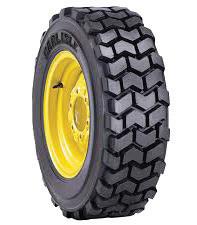


39 www.NJLCA.org Advertiser Index Advance Tire Inc. www.advancetires.com........39 Al D. Landscape, Tree and Garden Supply Stop aldlandscapingandtree.com....56 All Service Contractors Equipment www.allservicerents.com.....18 Association Member Trust www.amt-nj.com..................54 Bergen Brick Stone and Tile www.bergenbrick.com..........16 Braen Supply www.braensupply.com........12 Cambridge Pavers www.cambridgepavers.com.....6 Cliffside Body Corp www.cliffsidebody.com........14 Foley, Inc. www.foleyinc.com................24 Greenius share.golmn.com/NJLCA......34 Landscape Materials Inc. Landscapematerialsinc.com...39 LMN Pro share.golmn.com/NJLCA.....19 Matera’s Nursery 201-943-8288 ..........................2 SiteOne Landscape Supply www.siteone.com...................8 SnowFighters Institute Snowfightersinstitute.com..22+38 Tech Terra techterraenvironmental.com...55
WHAT TO EXPECT DURING A PESTICIDE BUSINESS INSPECTION

 by Steven Bross, NJ Department of Environmental Protection
by Steven Bross, NJ Department of Environmental Protection
1. License check – all applicators and operators licensed?
2. Business license check – is business properly licensed & up to date?
- Must have a Pesticide Business License
3. Pesticide Application records: Up to date? Must keep 3 years of records
a. All information on records: Place of application, Application date, Pesticide applied, EPA Reg. # of pesticide, Mix ratio (concentrate/dilutent), Mix applied, Application site, Applicator name and license #
b. Fire dept. letter sent by May 1 if you have a storage area. Must show a copy of the one that was sent.
c. Training records for Operators/Applicators proving 40 hrs. of on the job training.
d. Copies of labels for all products typically used by the business.
4. Must have a regulated storage area for pesticides if needed:
a. Proper ventilation
b. Locked enclosure
c. Spill kit
d. Fire extinguisher
5. Must provide Consumer Notification:
a. To all customers
b. Anyone else who requests it.
c. Must show a copy at time of an inspection.
6. Service Vehicle – Must follow regulations for a service vehicle:
a. Identified as containing pesticides
b. Container(s) < 5 gals. secured
c. Glass container(s) securely stored
d. Container(s) > 5 gals. secured to the vehicle
e. Absorbent material and shovel.
f. Fire extinguisher supplied. 10-B:C dry chemical or CO2
g. Pesticide in separate compartment.
h. Containers secured to prevent unauthorized removal.
i. Tank equipped with cover
j. Business reg. no. posted 3 inches on both sides of vehicle.
k. Containers properly labeled
l. Equipped with anti-backflow device if needed
i. Service vehicle regs above also apply to a roadside stop and also include a pesticide license check.
Below are the most common violations given:
• Unlicensed Pesticide Applicators
• Applying pesticides without a license
• Unlicensed pesticide applicator business
• Unlicensed applicators with pesticides on service vehicles
• Other service vehicle violations
• Records
• No pesticide application records kept
• Insufficient or incomplete records
• Consumer Information Notification
• Insufficient CIN given out
• NO CIN given out
• No fire department letter
40
Summer 2023
Stephen Bross is an Environmental Specialist for the NJDEP Bureau of Licensing & Pesticide Operations. He is a former enforcement officer for the NJDEP.
Pesticide Compliance Cheat Sheet
This following is an outline of how to comply with pesticide regulations, but is not a definitive explanation. To be safe, visit https://www.nj.gov/ dep/enforcement/pcp/pcp-regs.htm for the complete regulations guide.
Who Needs to be Certified?
• Anyone applying any pesticides. The only exception is if you are working directly under the supervision of someone who is.
Commercial Pesticide Applicator must:
• Be licensed in Core and a Category.
• Complete a Basic Training Course
• Perform 40 hours of on-the-job training prior to taking the Pesticide Applicator exam.
• Or take an approved Category Course
• Or submit an affidavit stating 1 year’s work experience.
Maintaining Applicator License
• Accrue 16 continuing education credits over a five-year period in all the categories they are licensed in to maintain their license.
• Accrue 8 Core continuing education credits in a five-year period to maintain their license.
• 30 minutes classroom time = 1 CEU
Commercial Pesticide Operator must:
• Proof of attendance from a Basic Pesticide Training Course.
• Complete 40 hours of on-the-job training
• Training must be documented by the trainer.
• Submit invoice and payment for Operators license.
• Submit invoice and payment for Operators license.
• Can only apply pesticide products to the primary licensed applicators categories.
Record Keeping:
• All commercial pesticide operators, applicators, and applicator businesses are required to maintain records of all pesticide applications performed by themselves or persons under their direct supervision.
• These records must be maintained for a period of three years, or five years if the use of a termiticide is required.

• These records must be kept at the business owner’s office and readily available upon inspection by the NJDEP Pest Control Program. There is no specific order in which these records should be maintained but the must include the following
• Date of application
• Place of application
• Name of product used. This must be a brand name, trade name or Code # that corresponds to a listing of pesticide’s complete brand or trade name. For example, pre, PreM is not acceptable. It would have to be Pre-M 3.3 EC, Pre-M .10% 19-3-7, etc.
• Amount of pesticide used: This does not mean the total amount of concentrate; it should say the total amount of mixed material used. One can record this by showing the total area treated and the rate of the application. For example, a 3,000 sq./ft. lawn is treated at a rate of 1 lb/1000 sq./ft., which means 3 lbs of pesticide
product, was used at the site.
• Dosage or rate of pesticide used: This is where you put the concentrate such as .5% or 1%
• Name of person making the application.






• Site of application
• Pesticide product names and EPA registration numbers: One could have a separate list with all names and EPA numbers, a book with each label and MSDS sheet which has the EPA number on it. There must be some record of the product and the EPA number visible.
Storage Requirements:
• A listing of all present pesticides stored or possible pesticides that might be stored throughout the year.

• This listing must be sent annually to the local Fire Company, along with a description of the actual location of the storage area.
• All containers must have a legible EPA-registered label attached.
• If a service container is used, (not the original container), the brand or trade name, EPA number, name and percentage of active ingredient, and a warning label must be on the service container.
www.NJLCA.org
41
• Pesticides cannot be stored in food-type containers such as milk cartons, etc.
• Certain pesticides should not be stored near the seed or fertilizers such as Pre-M. These containers should not be stored near such products.
• Locked enclosure for pesticides when unattended.
• Warning sign indicating that pesticides are being stored in that area.
• The storage area must be a separate, ventilated room from living quarters, i.e. (garage), and work areas, i.e. (offices).
• Ventilation must be sufficient, so fumes do not interfere with living or working areas.

Notification, prior to performing a pesticide application at a residence, a few steps must be taken. Information provided in writing with:
• Pesticide to be used.
• Label instructions, including precautions.
• Proposed dates – best estimates of application date.
• Provide a specific date if the customer requests.
• Other notification procedures might include notification of neighbors, depending on what the local town rules entail.
• An appropriate warning sign (flag)
must be posted and left for at least 72 hours and be removed by the homeowner no sooner than 72 hours after the application.
• Posting Flags must be installed prior to starting the application.
• At Schools, Parks, HOA’s and large commercial properties, posting flags should be placed at all principal access points.
Service Vehicles carrying pesticides:
• Identified as containing pesticides. This simply be the word pesticide with the business registration number in at least threeinch-high letters on both sides of the vehicle.

• Vehicles must have absorbent material, shovel and broom.
• Fire extinguisher.
• Pesticides stored in a separate compartment: All pesticides must be separated from the driver, (bed for a pick-up, partition for a van, anything that will limit the pesticide containers from reaching the driver).
• These containers must be securely locked when unattended. This includes all pesticide containers as well as handheld sprayers, etc. This is to be done due to unauthorized individuals obtaining the pesticides.
• Tanks equipped with a cover to
avoid spillage while the vehicle is in motion.
• Spray tanks must have an antibackflow device to avoid water pollution.
• All containers are properly labeled.
• Containers smaller than 5 gallons must be securely stored.
• 5-gallon containers or larger must be braced to the vehicle to prevent spillage due to movement.

• Glass containers securely stored: Glass containers must be securely padded to avoid breakage.
Spill Reporting:
• Inside a structure 1 gallon of liquid or any mixture containing 1# or more of active
• Outside a structure any pesticide containing more than 1# of active
• If spills with pesticides occur, they must be reported 877-WARN DEP and in writing, within 10 days of the spill.
Miscellaneous:
• All businesses should be registered with the state, as well as all applicators in the business.
• A list should be posted in the office of applicators showing name, category, and license number.





• Each business name and physical location must be licensed separately.
• All locations must employ a Certified Pesticide Applicator
• All businesses must carry General Liability insurance.
• All applicators are required to earn 8 Core credits and 16 credits per category by the end of their 5-year recertification period.
• A Pesticide Operator license becomes invalid if the Pesticide Operator changes employers.
• The NJ Pesticide Control Regulations at NJAC 7:30-9.11 allow beekeepers to voluntarily register their bee yards with the DEP and require pesticide applicators to notify those beekeepers at least 24 hours prior to the application of any pesticide labeled as toxic to bees if any registered bee yard is located within three miles of the application site.
• For more, visit https://www.nj.gov/ dep/enforcement/pcp/pcp-regs.htm
42 Summer 2023
Landscaping Companies: Are You Underinsured?
by Rob Bowen, Patriotic Insurance Group
As we all know, insurance policies are a necessity for businesses. Unfortunately, many businesses are underinsured and do not realize it until it’s too late. One industry that is particularly underinsured is landscaping.
The issue with landscaping is that there are different classifications of landscaping companies. The first classification is lawn maintenance. This classification allows landscapers to mow lawns, plant bushes, and trim trees. However, they are not allowed to do any work that requires them to leave the ground.
The confusion arises when landscapers start doing work that is outside of their classification. For example, if a landscaper begins to do retaining walls or tree trimming, they are no longer classified as a lawn maintenance company. This means they need a different insurance policy that covers the work they are doing.
Another area that is often overlooked is snowplowing. Many landscapers offer snowplowing services during the off-season, but this requires a completely separate policy. Snowplowing comes with its own set of risks, and it’s important to have the correct insurance coverage to protect your business.
It’s important for landscapers to be honest with their
insurance agent about the work they are doing. This will ensure that they have the correct policy in place to protect their business. It’s also important to read the policy carefully to understand what is covered and what is not covered.

Unfortunately, many landscapers learn that they are underinsured after a claim has been filed. This can be a devastating blow to a business. It’s important to take the time to review your policy and make sure you have the correct coverage in place.
Landscaping companies need to be aware of the different classifications of their industry and make sure they have the correct insurance coverage for the work they are doing. Don’t wait until it’s too late to find out that you are underinsured. Take the time to review your policy and make any necessary changes to protect your business.
Rob Bowen is the founder and CEO of Patriotic Insurance Group and Financial Services Professional at True North Financial Solutions. Prior to opening his insurance agency, he held various management positions at Fortune 500 Financial Services companies. I am a US Navy Veteran, BNI Rainmakers Chapter Member, and American Legion Vice Commander.
www.NJLCA.org 43
Chinch Bug Management in Residential Lawns
 by Jesse Benelli, PhD, Envu
by Jesse Benelli, PhD, Envu
The Problem
Chinch bugs are above ground pests that feed predominately during the summer months. Chinch bugs prefer to feed on Kentucky bluegrass and fescue lawns. However, damage can occur on other types of bluegrasses, bentgrasses, and ryegrasses. Damage tends to be most severe on recently sodded Kentucky bluegrass lawns. The two primary species of chinch bugs are the hairy chinch bug and the southern chinch bug. In New Jersey, it is the hairy chinch bug that is most problematic on cool-season turfgrasses. Regardless of the chinch bug species, all chinch bugs produce five nymphal stages before becoming mature adults. All nymphal stages as well as chinch bug adults are capable of damaging turfgrasses.
What To Look For
First instar nymphs are orange with a beige stripe that runs horizontally across the mid-section. Early instar nymphs are incredibly small, with most of them being just under 1 mm in length. As nymphs mature in size, the orange color gradually gives way to a more of a dark brown to grey appearance. It is
not until the 5th instar stage when wing pads are fully distinguishable, and the overall color of the chinch bug is black. Fully mature chinch bug adults will either be short-winged adults (cannot fly) or long-winged adults (can fly) and will be approximately 3 mm in length. Despite the ability to fly, most long winged adults will preferentially move along the surface of the ground as their preferred method of travel.

Chinch bugs overwinter as adults in late fall. Common overwintering sites include the turfgrass thatch, mulch beds, and beneath landscape rocks. In the spring, chinch bug adults migrate into lawns to begin feeding and mating. Females lay eggs when daytime temperatures exceed 60°F. Each female can lay up to 200-300 eggs each reproductive cycle. In the Midwest and Northeast, the eggs of chinch bugs may hatch in mid-to-late May depending on the region and weather.
Chinch bug nymphs and adults have piercing-sucking mouthparts that injure turf by withdrawing sap from leaf, sheath, crown, and stem tissues. During feeding, chinch bugs inject salivary toxins into the plant causing coagulation within stem and leaf tissue, which affects the plant’s ability to transport water and nutrients. Initial symptoms of chinch bug feed-
44 Summer 2023
ing include reddish purple discoloration of the leaf blade margins. As damage progresses, the affected leaves turn yellow, and thinning can be observed. As feeding intensifies, plants begin to turn straw color and do not respond to irrigation or fertilization inputs. If left untreated, large swaths of turf will decline and death can occur. Turfgrasses grown on south facing slops that receive full sun are at most risk of decline.
Effective Monitoring
Chinch bugs are most active during the early afternoon hours when it is sunny and warm. Adults can be seen in the spring on grass blades and nearby structures such as patios, decks, foundation walls, and fencing. Nymphs are much harder to see. Nymphs will be present from mid-to-late June through August. Nymphs tend to feed very close to the base of the plant stem. In late spring and early summer, it is important to get close to the ground and peel away the thatch material to scout for chinch bug nymphs.
An effective strategy for chinch bug scouting and monitoring is through a modified flush technique. Use a plastic or metal cylinder (such as a soup or coffee can) and remove both lids to the container. Lightly pound the canister into the ground with a rubber mallet so that the container is approximately 2 inches in the ground. Fill up the canister with water and keep refilling the canister to ensure water isn’t draining too quickly. After 30 seconds, chinch bug nymphs and adults will float to the surface. Count of the number of chinch bugs that have surfaced. A common threshold to determine if a spray application is necessary is approximately 5-8 chinch bugs per 6-inch diameter coffee canister. This sampling should be done at several locations in the lawn.
The use of monitoring growing degree days (GDD) could also be employed. Several variations of growing degree day models have been developed in North America. The most used base temperature is 7°C. Using this base temperature, peak egg development occurs at 187 – 340 GDD and 1st instar nymphs are observed between 250 – 500 GDD. Peak damage caused by 3rd and 4th instar nymphs occur between 600 – 1000 GDD.
Cultural Management Strategies
Fertility. Maintain adequate nitrogen fertility during spring, summer, and fall. Lawns deficient in nitrogen will have less energy and have a lower recuperative potential to tolerate chinch bug feeding. Late summer or fall fertilization can be effective in recovering compromised lawns.


Irrigation. It is important to irrigate lawns to prevent wilt stress during the summer months to prevent further turfgrass decline. Turf grown on south facing slopes in full sun may require more water than areas grown in shade.
Overseeding. Introducing endophyte-enhanced grasses will improve the lawn’s tolerance to chinch bug activity. Endophytes are non-pathogenic fungi that can allow for reduced inputs on residential lawns and can help reduce chinch bug damage.


Mowing. It is best to cut and maintain the lawn at a height of 2 – 3 inches height during the summer months. It is important to mow at the rate of growth. The rule of thumb is to not remove more than 1/3rd of the leaf tissue when moving. Maintain sharp blades to prevent a ragged cut that could result in moisture loss and decreased turf quality.
Effective Chemical Control
Populations of newly emerged chinch bug nymphs can rise very fast in the spring after the onset of warmer weather. Routine scouting and monitoring are critical to help time your insecticide applications. The best time to scout for chinch bug activity is when daytime conditions are warm and sunny. An insecticide application is usually warranted if chinch bug populations exceed 1520 nymphs and adults per square foot.
www.NJLCA.org 45
Contact insecticides, such as Barricor ®️ SP (a new generation pyrethroid), should be applied when chinch bug nymphs are most active (such as a warm and sunny day). Higher rates should
be used when chinch bug populations are extremely high. Tank mixing Barricor SP with a systemic insecticide (such as MeritTM or Tetrino®️) will help provide greater residual control of chinch bugs and offers a broader spectrum control of other insect pests such as white grubs and billbug larvae.
The number of insecticide applications to control chinch bug populations season long will depend on the region and weather. In most years a single well-



timed application will provide adequate control season long. However, a second insecticide application may be needed during if there is sustained heat and drought in late-summer and early fall.
Dr. Jesse Benelli is based in Greenville, SC, and is a Green Solutions Specialist for Envu covering the Southeast region. He is a graduate of the Pennsylvania State Turfgrass Program and received his MS and PhD degrees from the University of Tennessee. Prior to joining Envu, Dr. Benelli was the Director of Turfgrass Programs for the Chicago District Golf Association where he provided agronomic consulting with more than 400 member clubs throughout the region.
WELCOME MEMBERS...
A warm welcome to our new and returning members
ABR Lighting
Alex Vorzhbitsky
Danbury, CT
Avid Trails, LLC
Justin Lax Stockton, NJ
Evergreen Consolidated, LLC
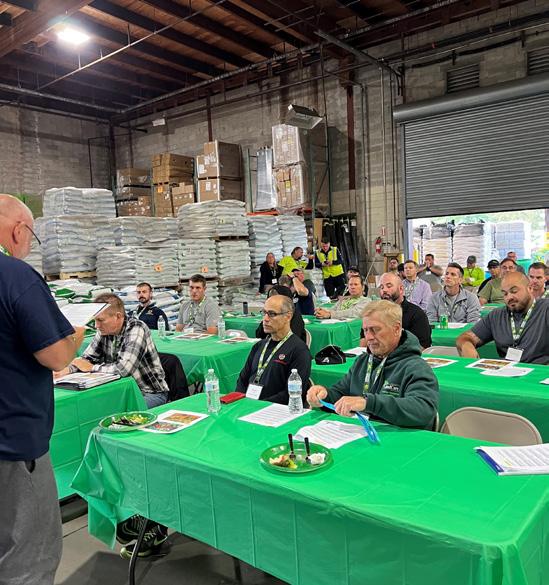
Gregory Moissinac
Egg Harbor City, NJ
Keystone Hardscapes
Derek Pukash
Branchville, NJ
Milwaukee Tool
Bob Krieger
Annandale, NJ
MJS Lawn Care, LLC
Mark Luppino
Manalapan, NJ
Pflueger Landscaping, LLC
Michael & Ryan Pflueger
Allendale, NJ
RER Supply
Justice Lettich
Riverdale, NJ
Tri-State Safety Solutions
Anthony Morreale
Toms River, NJ
WDS Landscaping Corp.
Damian Sanchez
Mahwah, NJ
46 Summer 2023
June 2023 NJLCA Member Meeting at SiteOne Landscape Supply in Mahwah, NJ
Poolscaping Makes a Bigger Splash by Adding Adjacent Amenities
by Charles Gamarekian, Cambridge Pavingstones
Often it’s what surrounds a backyard pool that makes the difference between having a pool in one’s backyard and having a pool in the backyard that represents only part of a fulfilling outdoor experience. Hardscaping materials such as interlocking concrete pavers, cast stone steps, and manufactured wall units in a continuum of styles and colors easily correlate with other similarly produced materials for pool coping, steps into the water, built-in raised spas, custom waterfalls, and overall milieu. But it doesn’t end there.
Pool coping separates the pool from the adjoining pool deck and is usually cantilevered over the pool’s edge. As opposed to fiberglass or plastic, it can be built from matching pavers, cast stone, or capping materials such as those adaptable
from several Cambridge Collections. The various surface and edge designs range from a bull-nosed (rounded) edge facing the pool to other styles resembling surrounding pavers more closely. Surfaces vary from smooth to shapes with pronounced, bluestone-like clefts.

Depending on the available space, many conveniences can be permanently placed close to the pool. Consider a pavilion, pergola, a bistro-style umbrella table; a refreshment bar; a fire pit for small gatherings; and an open-air kitchen, grill island, or our new fully assembled woodburning pizza oven/fireplace combo. Cambridge offers all of these, along with outdoor fireplaces, freestanding, pondless waterfalls, and other fire and water features that add ambiance. Whatever
homeowners decide, the outcome will be a common ground for everyone to enjoy.
Charles H. Gamarekian is the Chairman/ CEO of Cambridge Pavers Inc. He is one of the founders and a current board member of the Interlocking Pavement Institute. Organized in 1993, ICPI is the North American trade association representing the interlocking concrete paver industry and is considered by peer associations around the world as the leader in the development and dissemination of technical information for design professionals and contractors. Mr. Gamarekian is recognized worldwide as an expert in his field and is a frequent speaker on properly installing paving stones, wall stones, and many outdoor living products.
Photo: Installation by Thomas Flint Landscape Design & Development
UNDERSTANDING TURF DISEASE: BEST PRACTICES & CONTROL METHODS
by Doug Cherry, Synatek Solutions
The Spring 2023 Season is well under way and it is that time of year to consider Turf Diseases on the properties that you maintain.
As Turfgrass Managers it is extremely important to be aware of the basic fundamentals when dealing with a Turf Disease.
A Plant Disease is defined as an impairment of the normal state of a plant that interrupts or modifies its vital functions. All species of plants, wild and cultivated alike, are subject to disease.
TYPES OF DISEASE:
1. Abiotic: Non-infectious diseases are caused by environmental, cultural, and non-living things. Things causing abiotic diseases do not grow, reproduce or spread from plant to plant, meaning they are not considered contagious.
2. Biotic: Diseases caused by living organisms. They are better known as plant pathogens when they infect plants. They grow, reproduce, or spread from plant to plant, meaning that they are considered contagious.

Examples of Abiotic Factors:
• Water excess or deficiency
• Nutrient excess or deficiency
• Light excess of deficiency
• Adverse soil conditions
• Temperature extremes
• Air or water pollution
• Pesticide or fertilizer injury
• Animal damage
• Mechanical damage
Examples of Biotic Factors:
• Fungi: Most turfgrass diseases are caused by these simple microbial plants.
• Virus: Usually divert normal growth processes into abnormal ones.
• Parasite: Most pathogens are parasites that obtain nutrients from the Host Plant.
• Obligate Parasite: Survive only on a live host or living tissue.
• Saprophyte Parasite: Survive only on dead organic matter.
To gain more knowledge on this subject it is important to understand the function of:
48
Summer 2023
The Disease Triangle
In order for disease to occur three conditions are necessary (1) A susceptible host (2) An active pathogen (3) Favorable environment If any of the three conditions are missing, disease will not develop.
Fungicide Resistance:
Fungicide resistance is the naturally occurring inheritable adjustment in the ability of individuals in a population to survive a plant-protection product treatment that would normally offer effective control.
FRAC: Fungicide Resistance Action
This committee is an organization that works to prolong the effectiveness of fungicides that are liable to encounter resistance problems and to limit crop loss should resistance occur.
Visit their site to learn more: www.frac.info
Best Practices recommended to avoid the Resistance of Fungicides:
Diseases Progress in 4 Stages:
1. Infection: Disease pathogen enters the plant.
2. Incubation: Pathogen begins to live off the host plant. This pathogen inhibits its host without producing visible symptoms.
3. Symptom Development: Interaction between pathogen & susceptible host. Some visible examples: Lesions, Wilting, Leaf Spots, etc.
4. Inoculum Production: Stage when pathogen reproduces & spreads for self-preservation.
Some Steps to consider managing Turf Diseases effectively are as follows:
• Monitoring: Identify disease and percentage of coverage. Become familiar with its life cycle.
• Identification: Look for physical evidence of a problem such as:
1. Injury
2. Changes in site conditions
3. Soil compaction
4. Construction injury
5. Lawn Mower injury
6. Diseases
Methods of Control:
1. Cultural Controls:
• Proper sanitation
• Proper fertilization
• Irrigation (Early AM is recommended)
• Proper site selection
• Proper mowing height (3” or higher is recommended)
2. Biological Controls:
• Biological Agents: Milky Spore, Nematodes.
• Trichoderma Harzianus: Naturally occurring fungi that is used in the suppression of root diseases.
• Streptomyces Griseovirdis: Naturally occurring soil bacteria. The microbe deprives pathogenic fungi of living space & nourishment.
• Resistant Grass Seed Varieties: Bred specifically to resist certain diseases.
3. Pesticide Controls:
• Proper use of fungicides
• Least toxic solution first
• Preventative
• Curative
• DMI & Strobilurin Classes
• Use of resistant varieties.
• Permanent disease monitoring.
• Calibration of application equipment.
• Use of a sound fungicide rotation program. Select products from different pesticide classes to avoid resistance.
• Do not shorten the application periods of fungicides.
• Respect the residual times of each one.
• Do not use fungicides that are not labeled or registered for the crops on which they will be applied.
• Read and follow ALL information on the pesticide label of the product of choice for that particular fungicide application.
Doug Cherry is a graduate of SUNY Cobleskill with a Bachelor of Technology in Plant Sciences. Doug has been serving his customers providing situational knowledge & insights for 28 years in the Green Industry. He is a Sales Representative for SynaTek Solutions working in the Lawn & Landscape division. Doug has a true passion for Horticulture along with a focused dedication to helping customers solve problems achieving positive outcomes as an endresult. This consultative approach creates value that leads to the growth & overall success of their business. You can reach Doug at dcherry@synateksolutions.com.

www.NJLCA.org THE DISEASE TRIANGLE
(1) plant.
(2) Bacteria, fungi, virus.
49
(3) Temperature, injury, nutrition.
CONTRACTOR FOCUS: BIRCH HILL LANDSCAPING


A licensed Landscape Architect, with over 30 years of experience helping homeowners’ realize their properties potential. Barry Greenberg graduated from S.U.N.Y. College of Environmental Science and Forestry in Syracuse, NY, in 1981. After years of working for nurseries, arborists and landscape construction companies, both before, during and after college, he began his own company, Birch Hill Landscaping in 1985 with the help of his wife, also a landscape architecture graduate. Barry has won numerous awards for his projects, was president of the Springfield Garden Club, has lectured to numerous clubs and was featured in a documentary about the vegetative regeneration of an abandoned quarry.
Vincent Novellino graduated from Cook College, Rutgers University’s esteemed agricultural school with a degree in Environmental Planning & Design in 1999. Post graduation he obtained a National Certification as a Landscape Technician. He is licensed in New Jersey as a fertilizer & pesticide applicator as well as an Irrigation Contractor. Vincent runs the day to day operations of the company as well as manages all aspects of current projects.
50 Summer 2023
“The customer is entitled to creative designs, quality execution, and attention paid to every detail.”
ASSOCIATE FOCUS: LAWN DOCTOR CELEBRATES 55 YEARS!
Lawn Doctor, America’s oldest and most trusted lawn care franchise, is proud to announce our 55th Anniversary!

Lawn Doctor’s story began in the early 1960’s in a hardware store in Matawan, New Jersey. With new housing developments popping up throughout the area, Tony Giordano started giving free weekly lectures about proper lawn care methods to his growing customer base of new homeowners. As the popularity of these lectures grew, he realized there was an opportunity to provide lawn care services to the many customers who wanted professional results but didn’t have the time or know-how to do it themselves.
He soon teamed up with his friend, an engineer named Bob Magda, and began designing proprietary equipment that took their lawn care solution to an even higher level, and at the same time, became the first automated lawn care machine ever produced. Pretty soon, they had a thriving business and wanted to share their expertise and technology with the entire country. As a result, Lawn Doctor was born in 1967.
The Lawn Doctor model has been tested and perfected over 55 years. It is one of only four brands to be ranked in Entrepreneurs Top 500 for 43 straight years. Lawn Doctor’s success is a result of continued innovation in equipment technology, customized products, and quality service delivery. Each location is locally owned, providing that personal touch and attention to detail customers have come to love. The business has grown these past five decades, one local and trusted partner at a time. The level of service that they expect to provide can only be delivered by a business owner who lives in the same community with their customers.
Lawn Doctor was built with the goal of bringing superior service and advanced technology to the lawn care industry. With 78 million baby boomers in the U.S. coupled with dual-income homeowners on the rise, the convenience of professional lawn care is in demand now more than ever before. Nearly three-quarters of all U.S. households will utilize professional lawn care services in an $80 billion industry. Lawn Doctor is proud to be the largest lawn care franchise in the U.S. and equally proud of its industry leading 82% annual customer retention rate.
• The nation’s largest lawn care franchise

• One of only four brands to be ranked in Entrepreneurs Top 500 for 43 straight years; since the inception of this ranking
• Added 175 franchise locations in the last 5 years
• They manufacture their own proprietary state-of-the-art equipment - right here in the U.S.
• The highest online review score in the business among national providers
• They have 50 franchisees who have been with them for more than 20 years
They have 25 franchisees who are multi-generational owners
51 www.NJLCA.org
“Happinest Brands, parent franchisor of Lawn Doctor, Mosquito Hunters and ecomaids has set out to centralize these necessary services and stream the operations for franchise owners, and the company has seen great success doing so.”

REGISTER TODAY
TALES FROM THE LANDSCAPE SIDE

NJLCA MEMBERS AND THEIR ADVENTURES
In the mid-summer of 2020, I reached out to our members to ask about their most memorable customers. I expected horror stories of the worst, most demanding, craziest and funniest customers. What I ended up receiving was truly amazing. Most of the stories you sent in to us were heartwarming and spoke of your favorite customers, those that took time to reach out and tell you what an impact you had on their lives, those that became like family and those that became lifelong friends. I also received some funny and wacky customer stories, but even those didn’t talk of the angry and discontented customers I had expected. I decided that instead of creating one story, I will include a few in each issue of The New Jersey Landscape Contractor. So, keep those stories coming to me, the good, the bad and the ugly. You can send your story to gwoolcott@njlca. org (along with pictures if applicable) and I will include them in this column in future issues. Thank you all for brightening our days with some of your tales from the landscape side!
~ Gail Woolcott, Executive Director
Landscaping & Cocktails
 by Mark Graser, Custom Groundskeeping
by Mark Graser, Custom Groundskeeping
I met the Ploof’s, transplants from Long Island, almost 20 years ago (here in Central Virginia). Initially, he was mowing his own lawn and I provided all the other services; turf and ornamental care etc. At some point he decided to have me mow his yard, while he continued to roughmow the area along the street. (I should mention that we live in “the country”, about 20 miles northwest of Richmond, where most houses are on 10 acre lotsthe minimum required by law). Anyhow,
one day as I was finishing up he comes out and asks “Hey, you want a bee-yah?” [Told you he was from L.I.!] Of course my reply was “Yes!” It was the end of the day and I lived only 7 minutes away.
Well, that beer turned into a weekly thing, with both of us alternating “buying” each other beers. [Some of Virginia’s best craft beers as we are home to almost 300 breweries now!] Soon it became apparent that he was a “hop-head” - IPA’s, while I preferred everything else but, particularly the dark ales,porters, and stouts (which he called “Motor Oil!”
Well, bottles turned to frosty mugs, which turned into cheese and crackers, which eventually included his neighbor Harvey and his wife Laura. A full-blown Thursday evening cocktail party!!!
Unfortunately, as he passed through his 70’s his health began to deteriorate; with


visits/stays in the hospital becoming all the more common. His last stay was caused by a minor stroke, with a stint in re-hab. I showed up Wednesday morning at the house and found a ramp leading up to the front door; he was finally home. I left that day to get the last few days of black-powder deer hunting in, but before I left I texted him that I was glad to see him back and couldn’t wait to share another beer. That Saturday, I received word from my wife that he had passed that Wednesday afternoon, at home where he belonged.
Every Thanksgiving I visit his grave, and pour an IPA over it in memory of a great friend, and customer!
I’ve been meaning to write this for 2 1/2 years; alas, I just attended Laura’s funeral this week-technically from Dementia, but realistically from a heart broken after 56 years of marriage.
53
Together We Can Do Great Health.
Health plans designed to give members more options with better service at lower cost.
How AMT Works for You
When member businesses join AMT, they get superior value and service from a self-funded, not-for-profit trust that serves the needs of thousands of participating employer members.
AMT’s plans are designed to give small businesses more options with better service at lower cost. Healthcare consumers should expect and get more, so we put our profits into improving our plans, and, when possible, we pay dividends.
Request an Online Quote
Visit www.amt-nj.com and click on “Request a Quote.” Our easy form will automatically generate several options. Our representatives can advise you on selecting the right plan for your needs.

Why Become an AMT Member?
Member businesses benefit from:

• The largest selection of competitively-priced, self-funded health coverage plan options
• Access to the provider networks of Horizon Blue Cross Blue Shield of New Jersey and Delta Dental
• Dedicated service people who help you with plan selection, service and claims
54 Spring 2022 LANDSCAPE NEW JERSEY 2023

Spring/Summer 2021

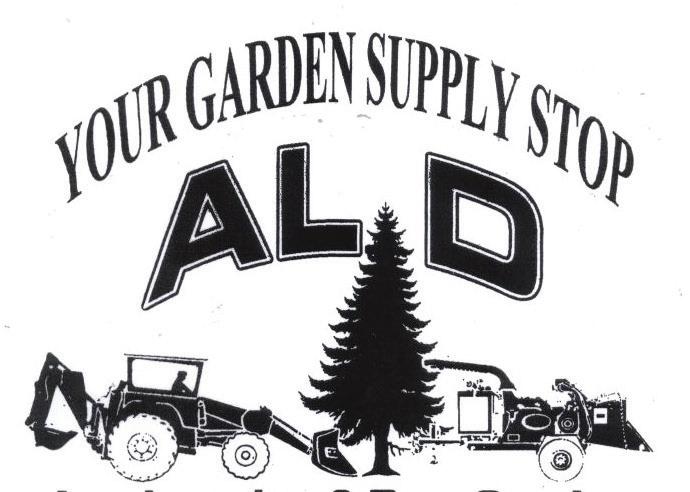

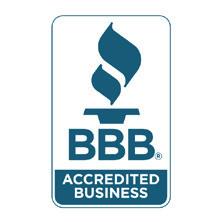


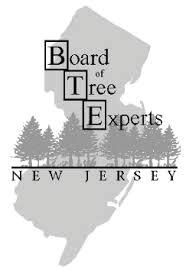
Contractors Welcome 174 Sedore Ave. Fairview, NJ 07022 Bulk & Bag Mulch and Topsoil Pickup or Delivery Grass Seed, Fertilizer, Hand Tools and Accessories Complete Tree Service • Trimming • Pruning • Trees • Shrubs • Fertilizing • Stump Removal • Land Clearing • Storm Damage Rubbish and Debris Removal • Seasoned Firewood Our family has been serving the community for over 100 years! No job is too small, we offer competitive rates Fully Insured • Year-Round Service • Free Estimates Albert DeMuro - CLT, LTCO #129 Brian DeMuro - CLT, LTCO #633 God Bless America! (201) 945-0069 Al D Landscaping Tree Service and Garden Supply Stop www.aldlandscapingandtreeservice.com facebook.com/aldlandscapingandtreeservice Registered with the NJ Department of Consumer Affairs #13VH00121800 and the New Jersey Board of Tree Experts #NJTC768014

















 Gail Woolcott, Executive Director Editor of The New Jersey Landscape Contractor
Gail Woolcott, Executive Director Editor of The New Jersey Landscape Contractor














 by Michael A. D’Altrui, CIC, Partner, Conover Beyer Insurance
by Michael A. D’Altrui, CIC, Partner, Conover Beyer Insurance










 Bob Andrzejczak is the State Executive Director of the USDA Farm Service Agency (FSA) in New Jersey.
Bob Andrzejczak is the State Executive Director of the USDA Farm Service Agency (FSA) in New Jersey.





















 by the Outdoor Power Equipment Institute
by the Outdoor Power Equipment Institute








 by Phil Harwood, Grow the Bench
by Phil Harwood, Grow the Bench

 &
Agent (Ocean &
&
Agent (Ocean &





















 by Steven Bross, NJ Department of Environmental Protection
by Steven Bross, NJ Department of Environmental Protection






 by Jesse Benelli, PhD, Envu
by Jesse Benelli, PhD, Envu


















 by Mark Graser, Custom Groundskeeping
by Mark Graser, Custom Groundskeeping












